Sunday September the 1st saw us waving goodbye to Robert and Vanessa when they weighed anchor at 9 o’clock and motored off during a break in the rain, with Ucluelet as their intended destination.
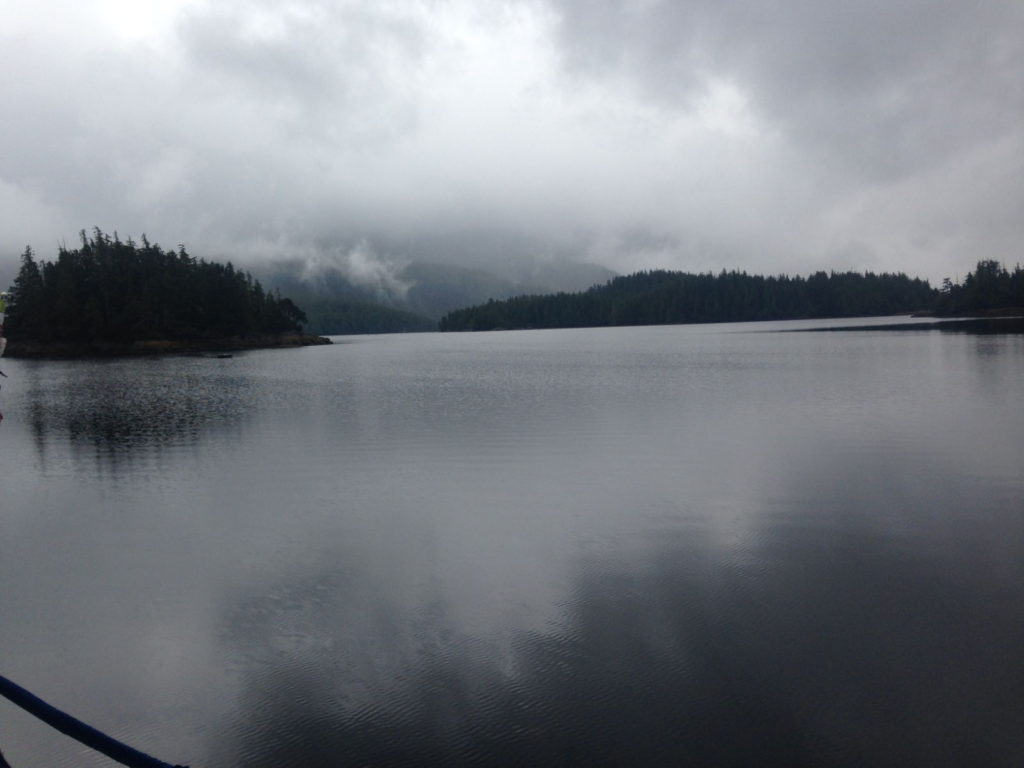
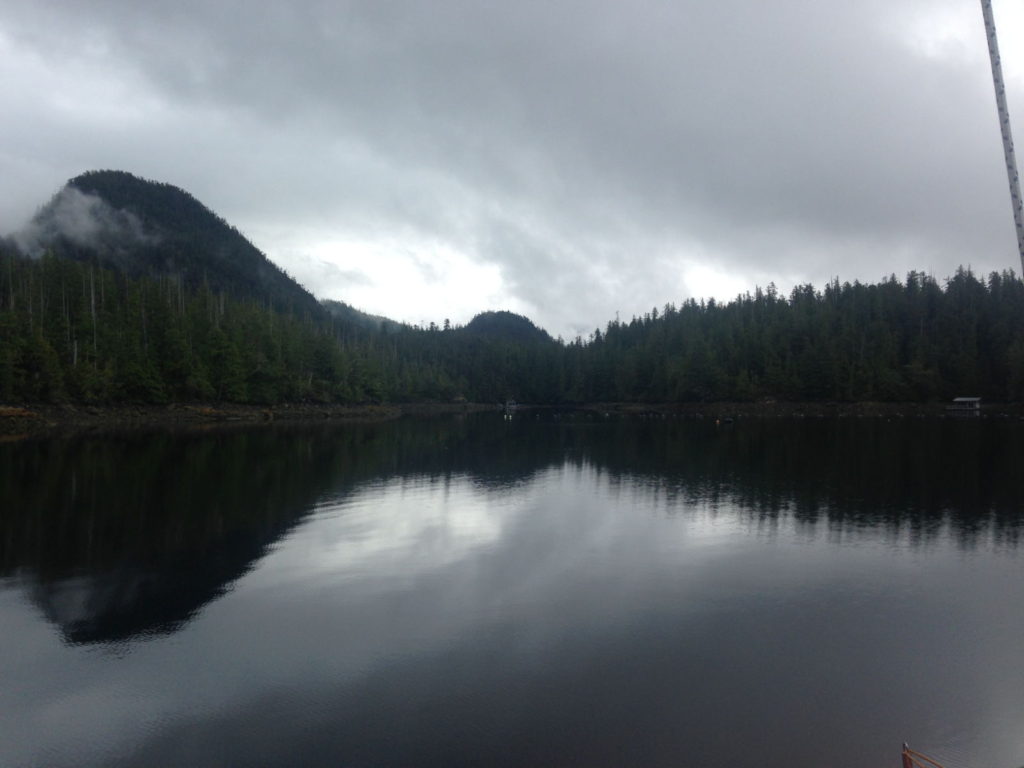
It had been a grey, drizzly start to the day but had brightened a little when we set off at 2 o’clock for the anchorage at Tofino. There, we would go ashore for provisions and begin our two day passage to America at around 8pm. God’s Pocket has no phone coverage so it wasn’t until we were well on our way to Tofino that afternoon that Paul got a message from Robert to say they’d had engine trouble and were back in the marina at Tofino, having been towed there by the nautical equivalent of the AA. It took us two attempts to anchor in the bay when we reached Tofino – the first time we inadvertently ended up alarmingly close to the location of a submarine cable on the sea bed. Naturally, our first call was to see how Robert and Vanessa were faring, so we dinghied straight over to For Good, almost running over the diver who had come to fix their problem. It turned out that the kelp that permeates the water in the area had clogged the water intake system. More expense for them, and yet another piece of boating equipment to add to the ‘to buy’ list. We commiserated, knowing only too well the frustration that accompanies broken parts and thwarted plans.
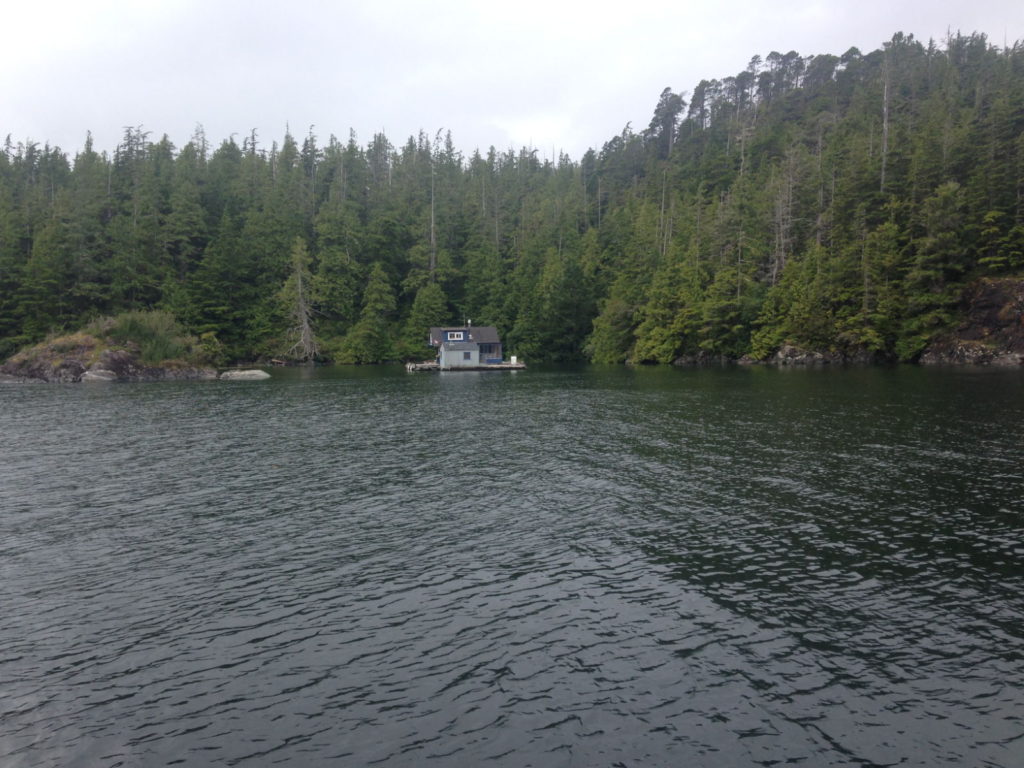
On our return from the Co-op we stopped at a viewing platform to sit and look over the bay. I spotted movement just under the roof of the huge fish processing plant near the marina which turned out to be four raccoons on a ledge at the top of the wall. They were balanced precariously and I thought they were getting ready to leap down on to the grass below, but instead they disappeared one by one into the building through a gap between the roof and the wall. They looked for all the world like a gang of robbers with their natural black eye-masked faces and their furtive backward glances before they entered the gap. It’s hard to imagine what they did in there but it seemed to us that it wasn’t their first time. One of them emerged a few minutes later, jumped down and scurried off towards the wooded area where I was heading to see if I could spot any more in the trees there. Paul managed to get a picture of it.
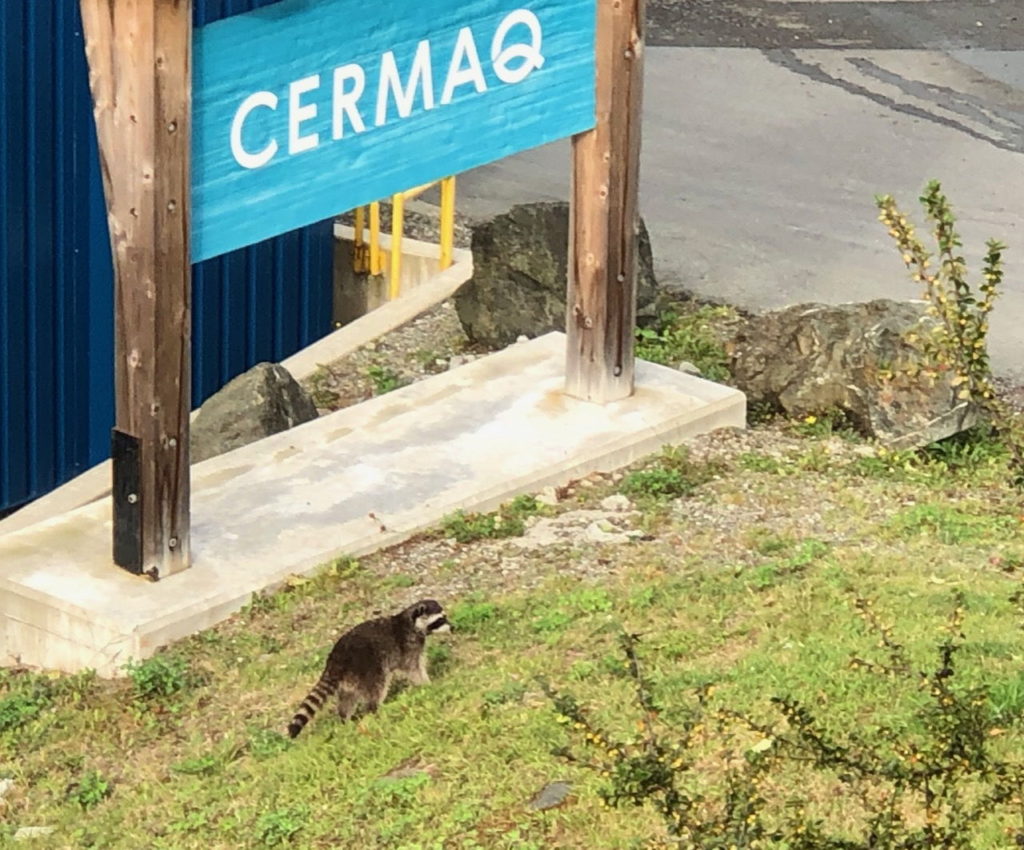
Before returning to Sister Midnight, we helped Robert and Vanessa turn their boat around to make it easier for them to motor off in the morning and then sat in the cockpit of For Good for a chat and another farewell drink. I could have happily stayed all evening, but time was getting on and we had to set off when the tide was best for us. Traversing shallow water on a foggy evening where rocks abound takes considerable skill and planning, not to mention nerve. Luckily, Paul possesses all of those qualities and he motored us over the initial tricky parts before I took the first watch. This was our first overnight passage for a long time, and with no moon and thick fog it was very dark. Visibility was so poor, there seemed little point in being in the cockpit much, apart from checking the engine temperature and the course. The combination of the AIS and radar for reassurance is such a boon at times like this. Even if other vessels don’t have AIS, the radar picks out anything around us. Without it, it would feel like hurtling blindly on at considerable speed at the mercy of anything that might be in our path. That is an incredibly unnerving feeling and yet I still felt compelled to go up at intervals to peer out at the darkness. The stern lights lit up the swirling fog, creating a pleasing atmospheric image and a feeling of being quite alone out there.
So began our four hours on, four hours off watch system. We tend to stick to the same pattern whereby I take the 8pm – midnight and 4 – 8am slots, mainly because I like to see the sunrise but also because it seems best suited to our sleep patterns. If we’re not sailing it’s just a case of keeping the course by tweaking the autohelm’s dials a few degrees to port or starboard, checking the screens and horizon for vessels and making sure the engine temperature is constant. During one of my trips up to the cockpit just before dawn, I noticed a small round object on the starboard seat. It was too dark to make out what it was so I shone the torch and saw that it was a tiny yellow bird, scrunched up with its feathers blowing in the breeze. The torch beam made it twitch but it didn’t fly off, and I wondered if it was cold or exhausted, especially if it was a young one. I fetched a warm cloth from the cupboard above the engine to place next to it but as soon as I got near, it flew off and could well have stayed with us for the rest of the morning somewhere else on the boat but I didn’t see it again. The picture isn’t very clear but you get the idea.
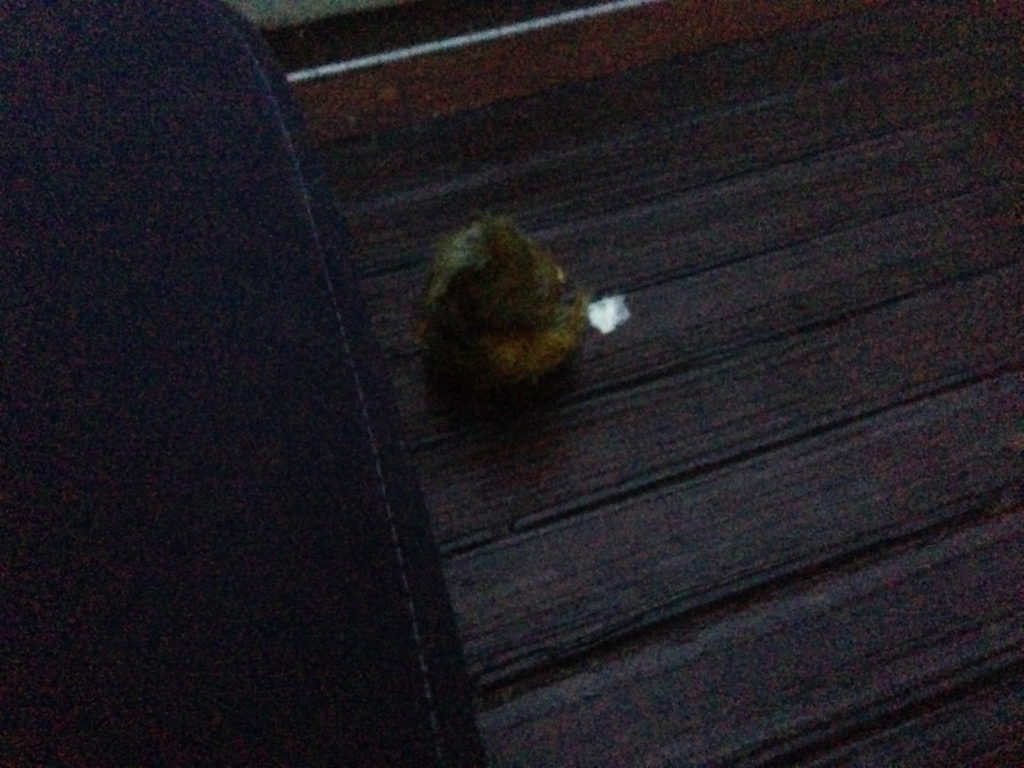
With the fog gone by 7am, the day passed with our sleeping and watching routine as we journeyed out into the big wide open of the North Pacific. We had crossed the border between Canada and America at some point during the night, and I thought not for the first time how strange it was to do that without all the kerfuffle that is usually involved at border crossings.
On the morning of Tuesday 3rd September more fishing boats began to appear as we neared the port of Astoria. This is where we would be clearing in and Paul had timed our arrival to ensure we crossed the Columbia River bar safely. Still slightly groggy from waking at around 10 30, I was only half listening to why it was so crucial to get the timing right for this bar. I heard him say that many boats had sunk there and how dangerous it could be but I assumed that was ‘in the old days’ or that they’d been the victims of historic pirates. All I knew was that it seemed to take ages to cross this bar. Paul was at the helm steering and I was looking out for the marker buoys and reporting their colours as well as keeping a close eye on the depth. I could see Astoria in the distance as we lurched from side to side in the swell but it didn’t seem to be getting any closer. A fishing boat contacted Paul on the VHF to chat with him about our boat, having admired it as he passed. I heard him remark that the bar shouldn’t present too much of a problem to us today, and then later he made a point of calling Paul again to compliment him on his skill at crossing the Astoria bar for the first time. It dawned on me then that there was more to this bar than I had thought. After declaring that we were through it, Paul told me it was known as ‘The Graveyard of The Pacific’, and that the unfortunate boats that had come a cropper there were in fact from recent and present times as well as from those ‘old days’. These posters from Astoria’s maritime museum convey information that I was blissfully ignorant of before we crossed it (but of course we would have to face it again when we left).
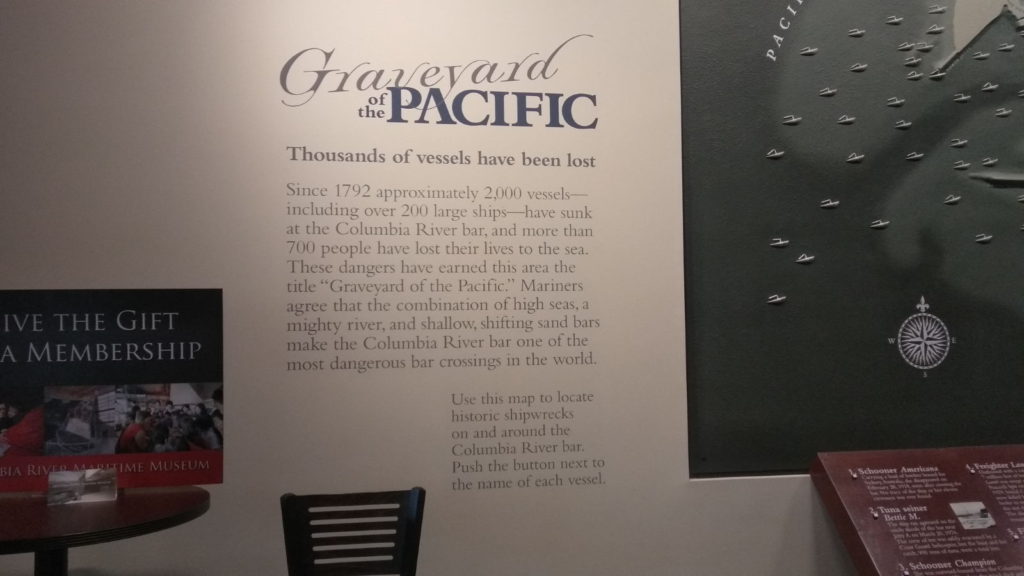
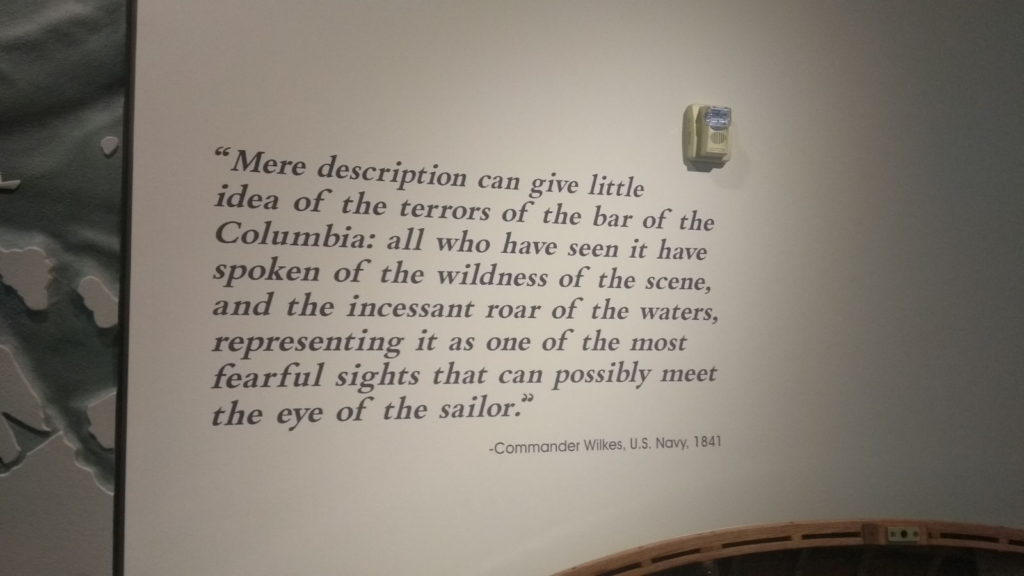
We filled up with fuel, Paul went to check us in with customs and then we tied up in our berth. I was amazed that my presence wasn’t even required for our entry to the US. Paul took my passport, answered a few questions and we were both cleared for a year’s stay in America. That’s my kind of border control.
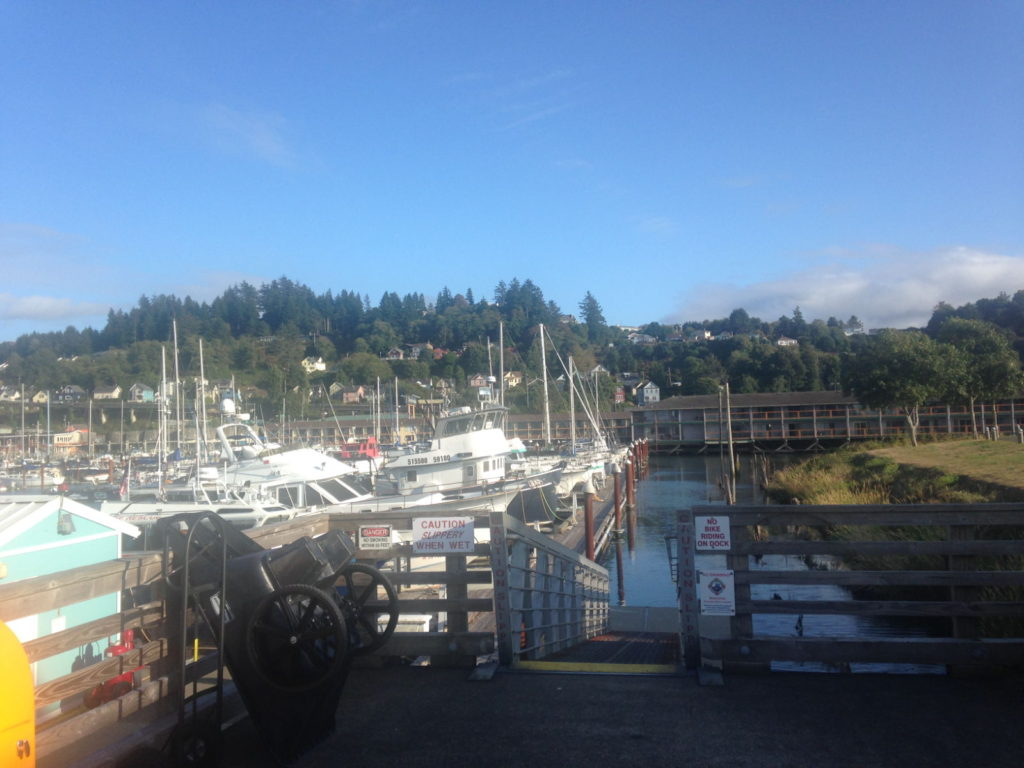
Despite being tired from the passage we were keen to check out our surroundings, so went for a walk along the Riverfront Walk, a coastal boardwalk complete with a railway track that runs a trolley service during the day in the summer months. It was a lovely evening, clear and bathed in the pink and orange hues of the sinking sun. There was plenty to admire along the boardwalk as the pictures show. My favourite was a disused pier which had been completely taken over by an assortment of seabirds. Iconic American images kept appearing, such as railway crossing signs, fire hydrants, mailboxes and box car carriages on the railway sidings. I felt happy to be back in America.
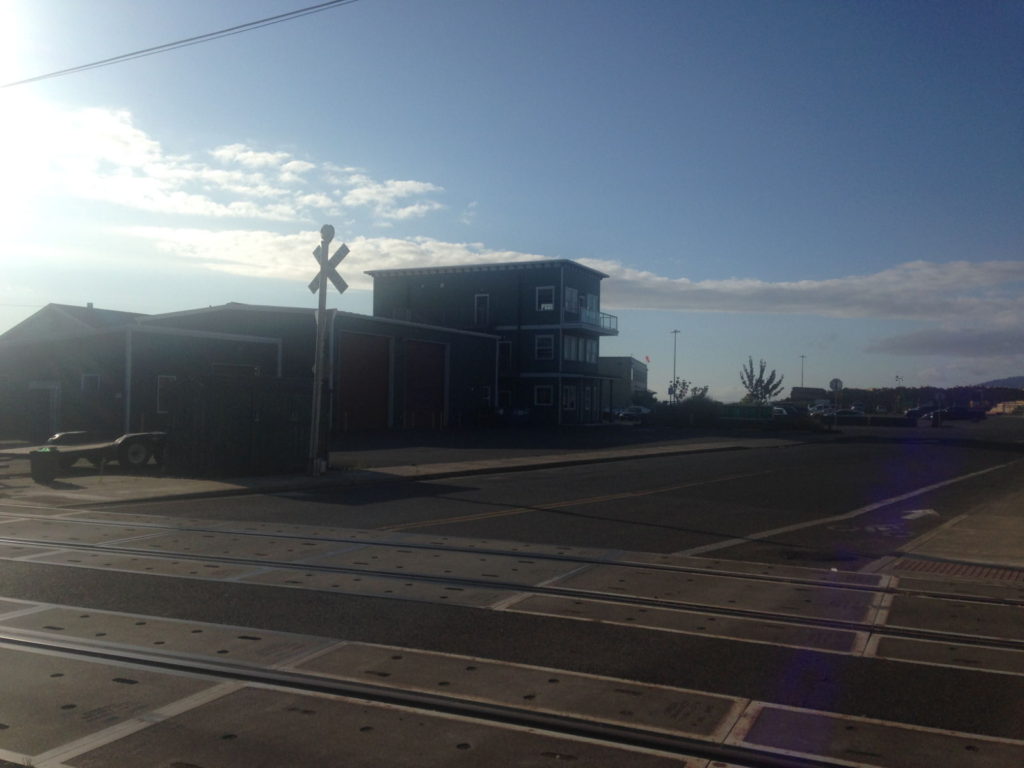
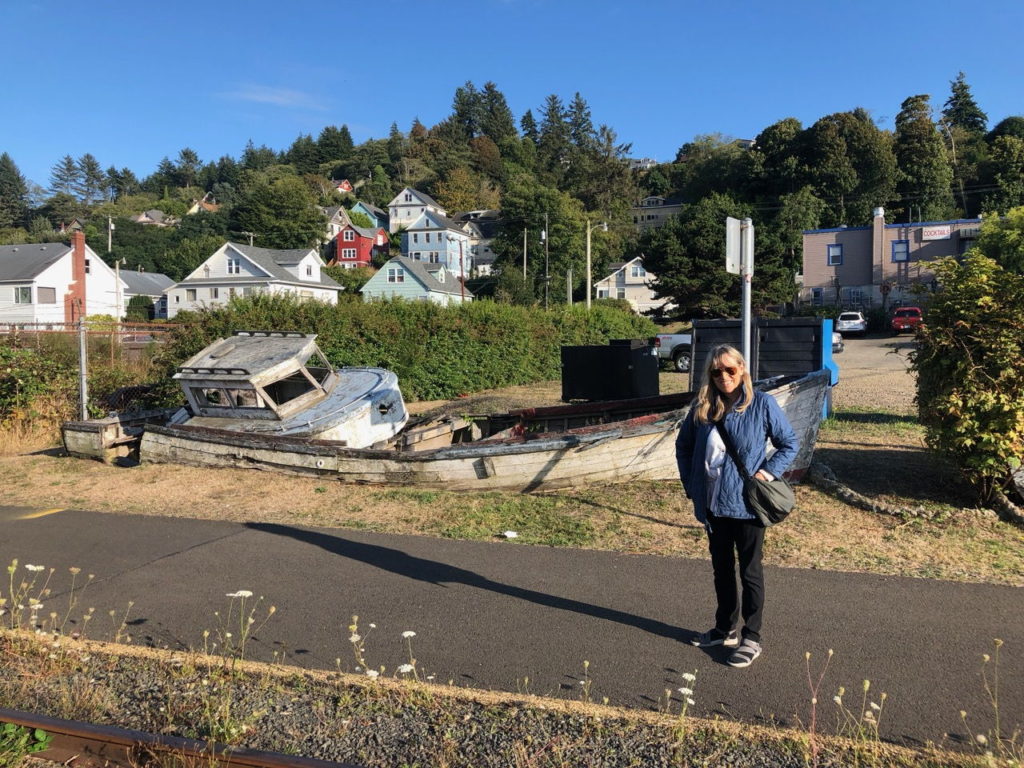
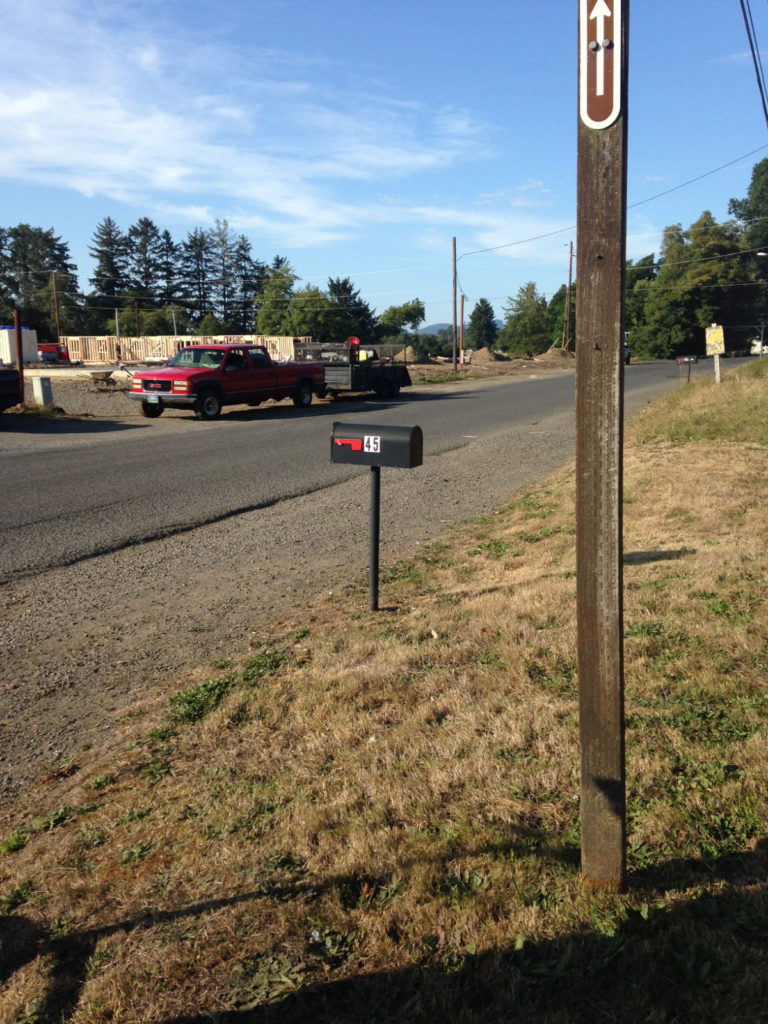
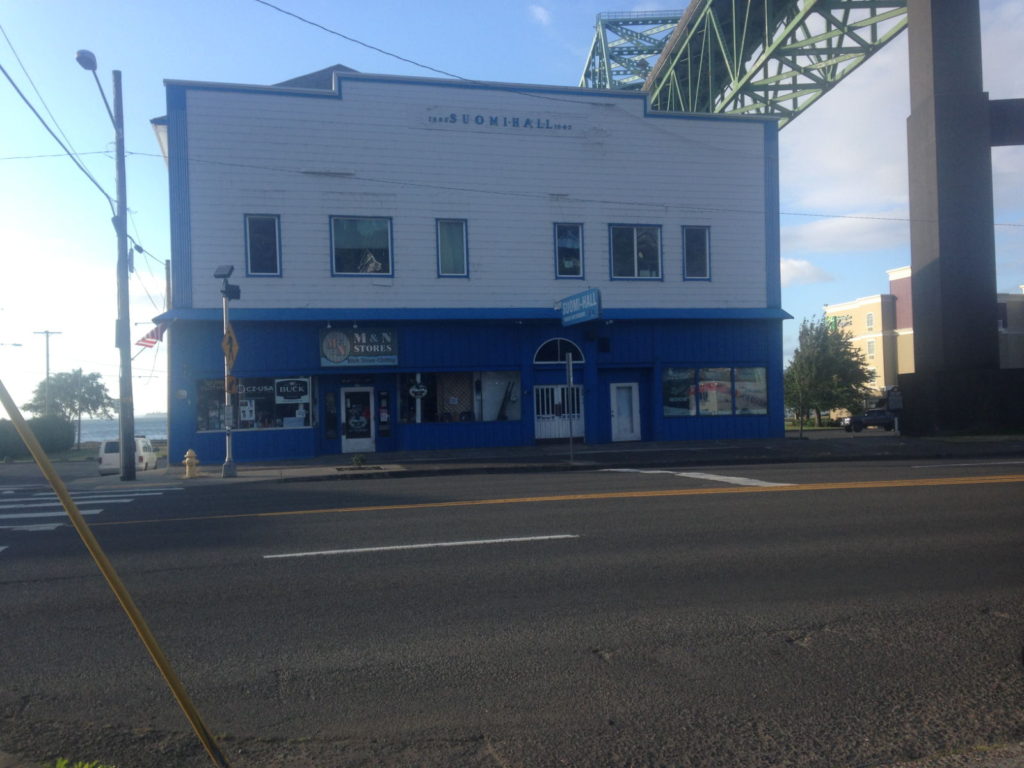
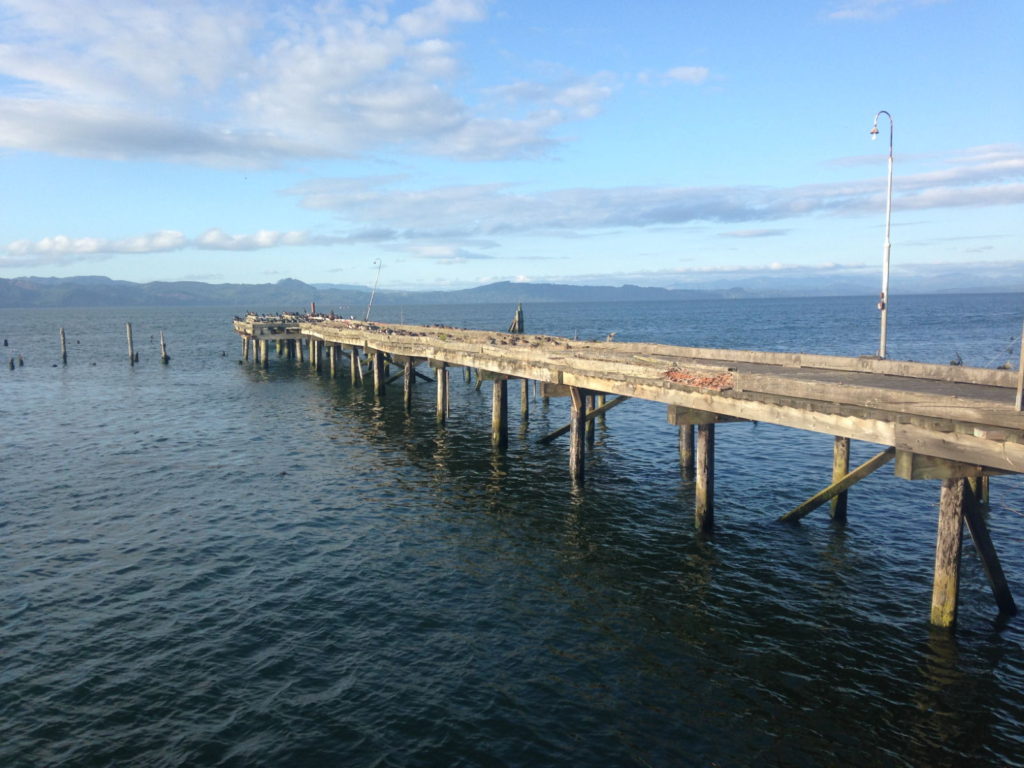
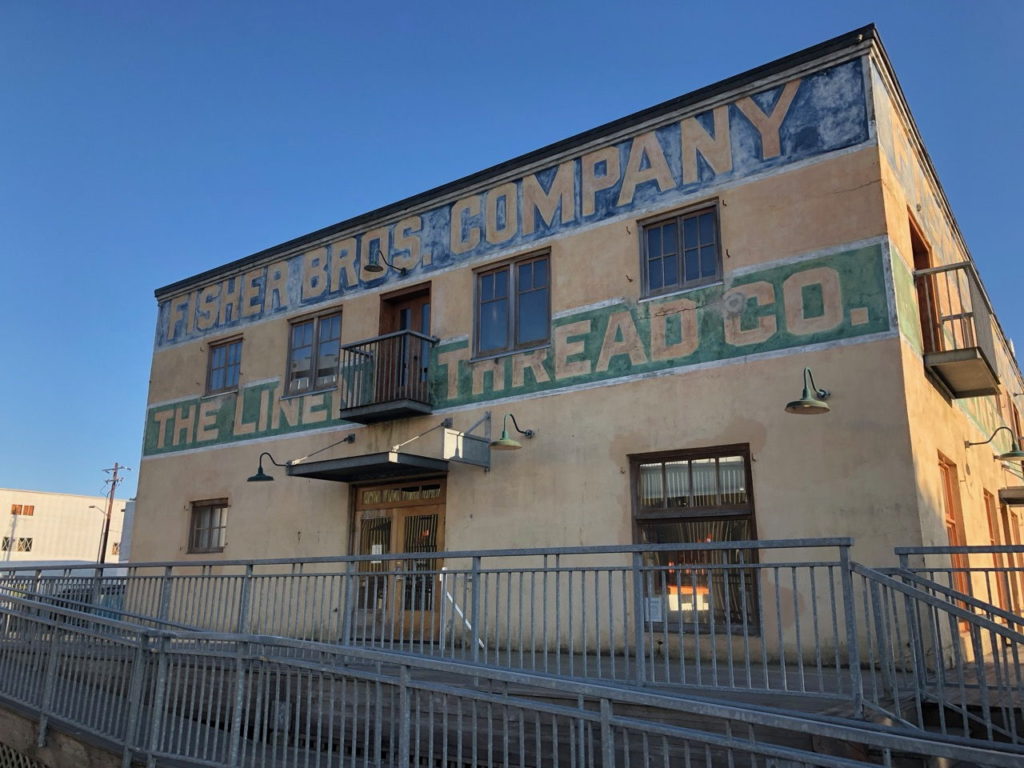
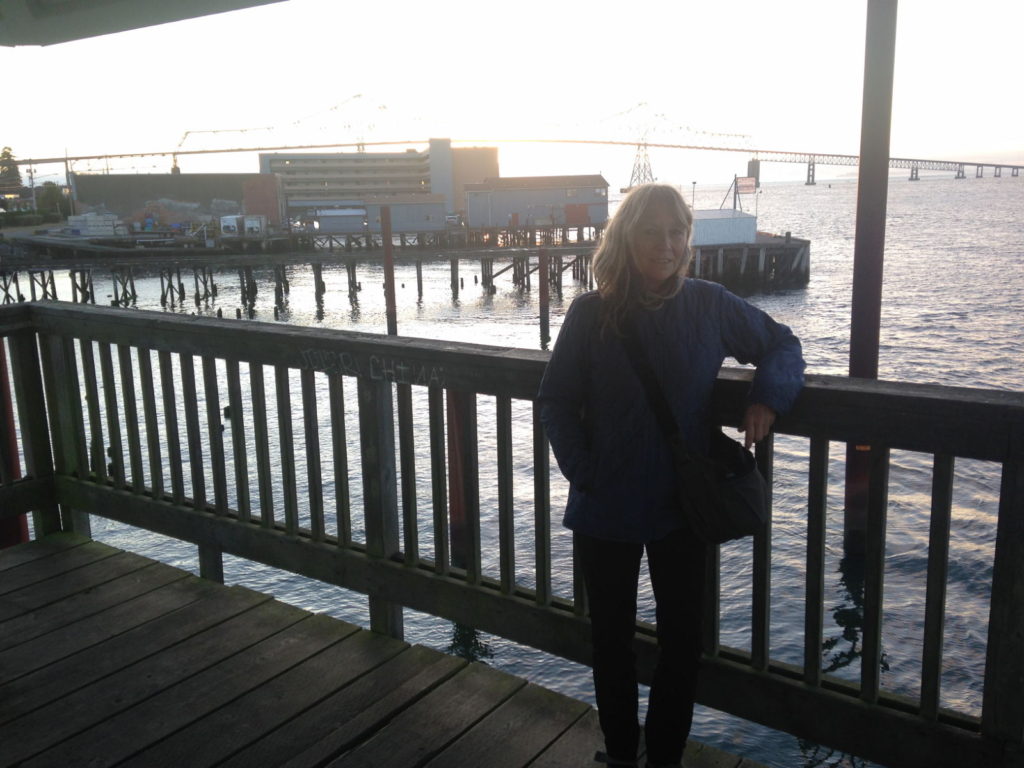
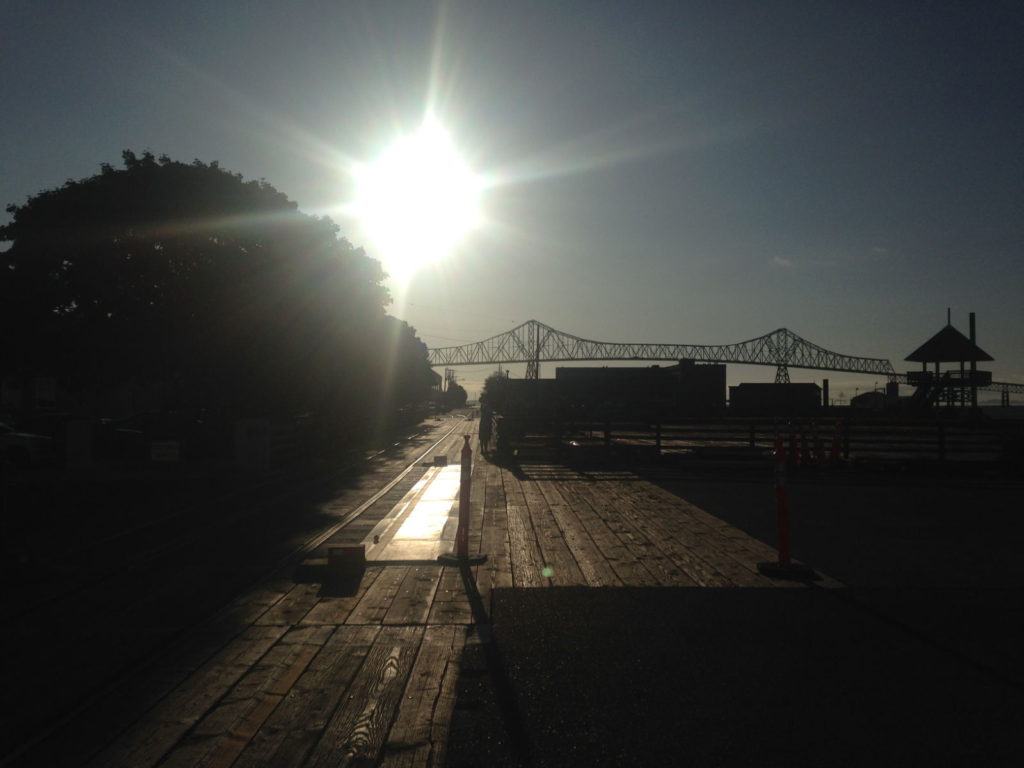
We stopped for food and drink at a waterside establishment called Buoy Beer which is next to the Buoy Brewery that produces a wide range of ales and beers. I felt it would be rude not to try one, especially as it helps animals (see below). A viewing floor with see-through plates allows customers to watch sea lions underneath them as they swim or rest on the underwater pillars. Little did I know this would be the first of many sea lions I would have the pleasure of looking at in America.
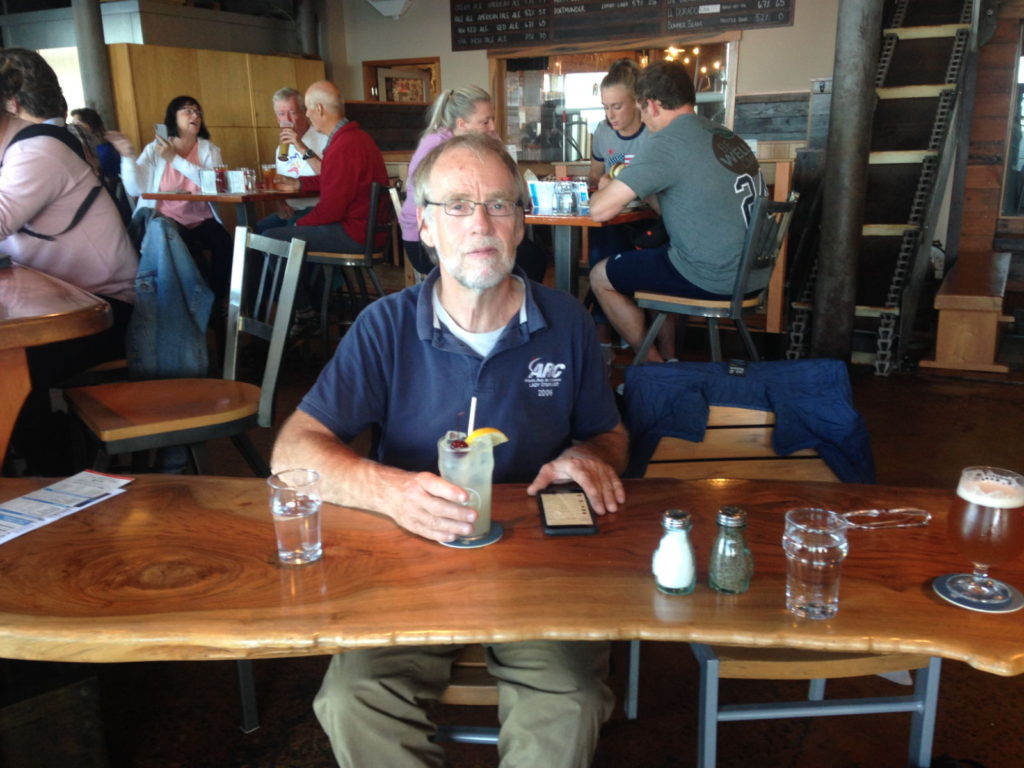
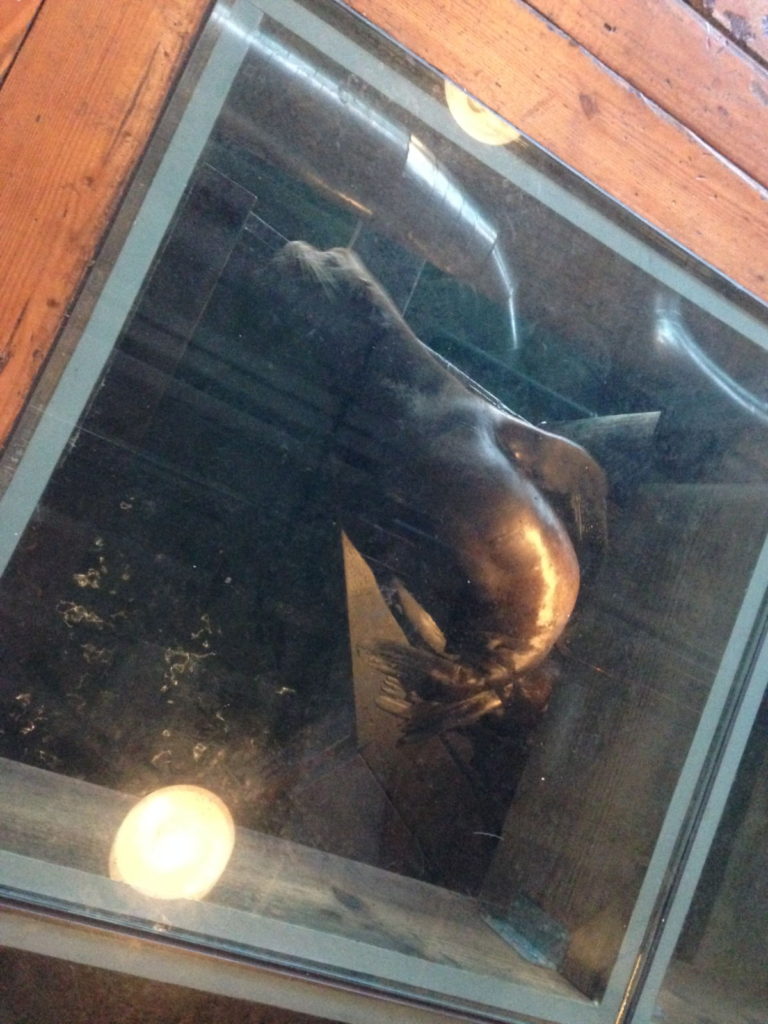
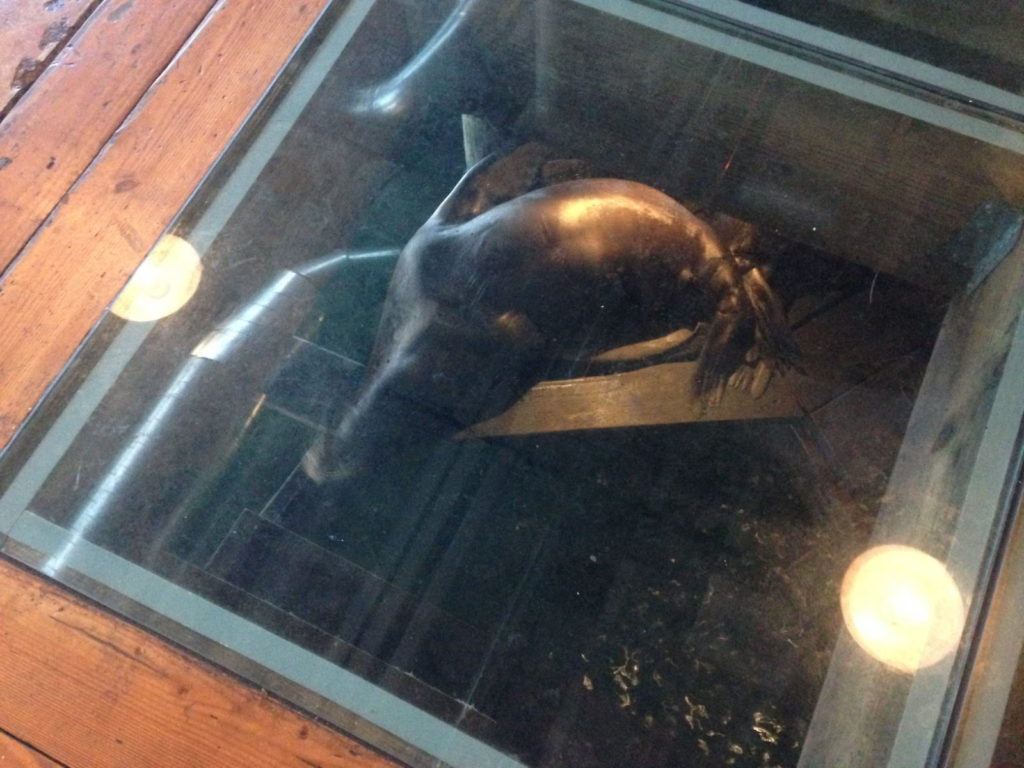
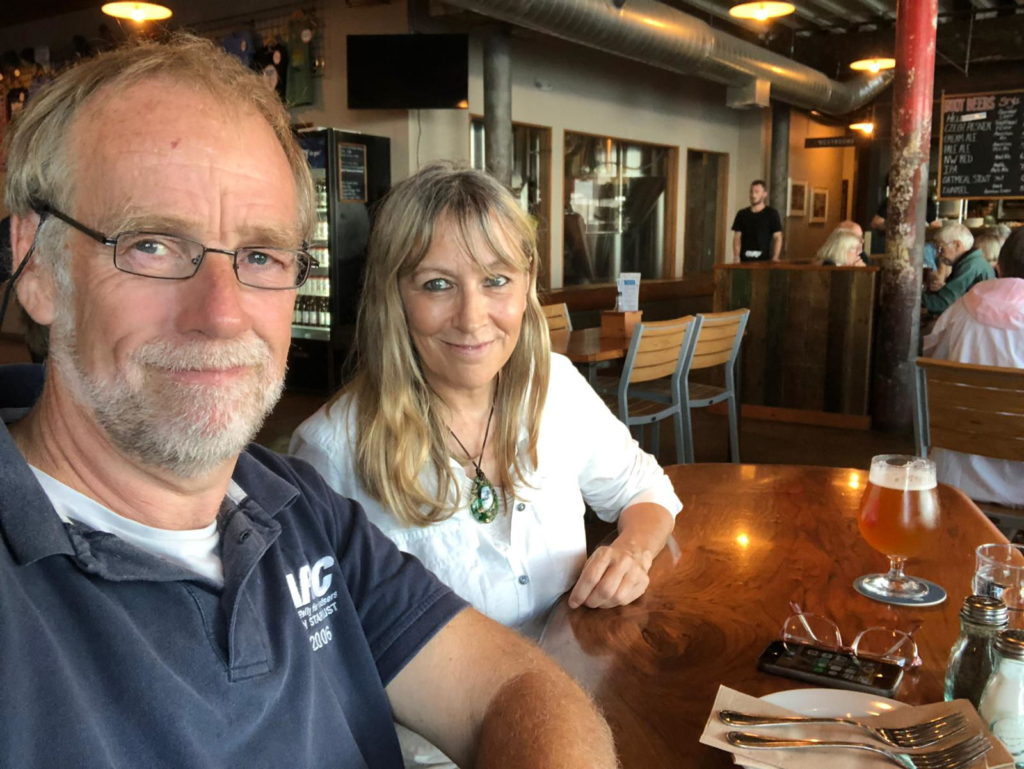
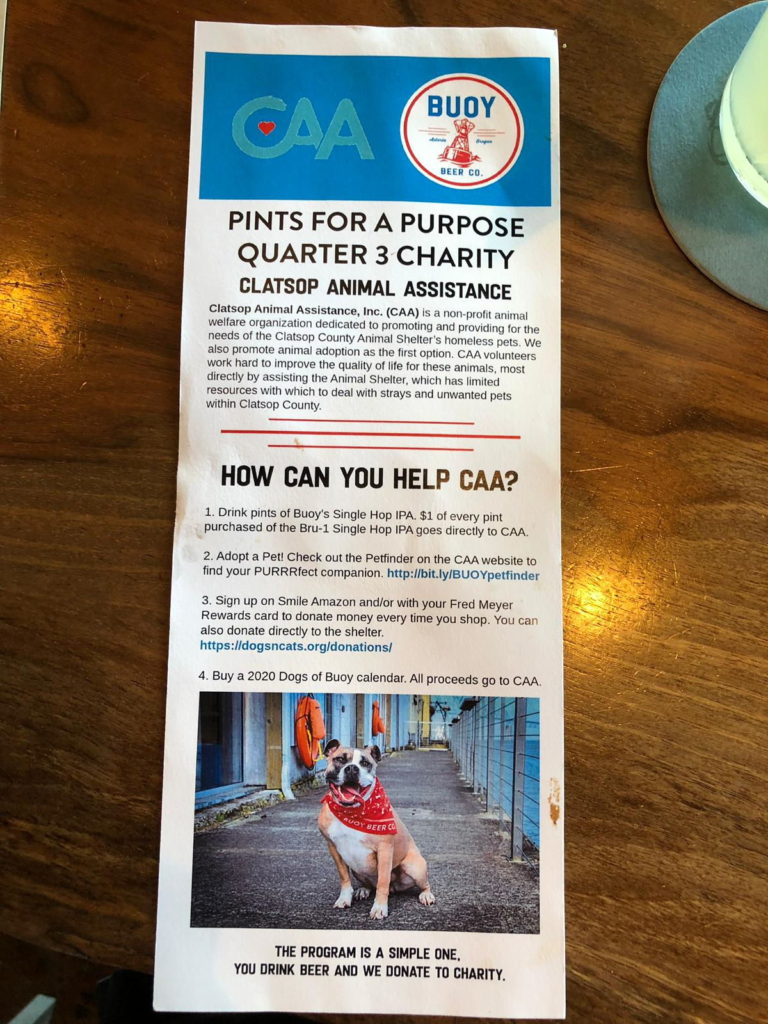
Next day we decided to take a ride on the ‘Old 300’ Riverfront historic trolley. We knew that it drops passengers off at the Safeway supermarket, a couple of miles along the track. It turned out to be a delightful experience. Run by volunteers, the trolley was built in 1913 and was in service until 1933 when they were deemed too slow and streetcar services ended. After time spent in various museums and several attempts at restoration, an all-volunteer group in Astoria raised funds and arranged for expert manpower to completely restore and preserve the car. It’s clear that the drivers and conductors are passionate about her. They provide a humorous and informative commentary and interact warmly with the passengers. The interior wooden carriage is gorgeous, done out in the style of the 1930s, complete with old-style adverts on the walls. Passengers get to contribute to the experience when instructed by turning the seats around by use of a lever on the side so that they face the direction of travel for the return trip. The views across the bay were glorious and we were told about the birds on the disused pier (cormorants mainly but we spotted herons and others…) as well as the sea lions who have taken over pontoons further along the track. The commentary also informed us about Astoria’s canneries and other landmarks of its fishing industry. They were particularly proud of Astoria’s place in movie history, pointing out the places that have been used as locations for several big films such as Free Willy, The Goonies and Kindergarten Cop. At intervals, the trolley bell was rung, either by the driver or anyone else who wanted to have a go, providing an iconic American sound with its ‘clanging’ refrain.
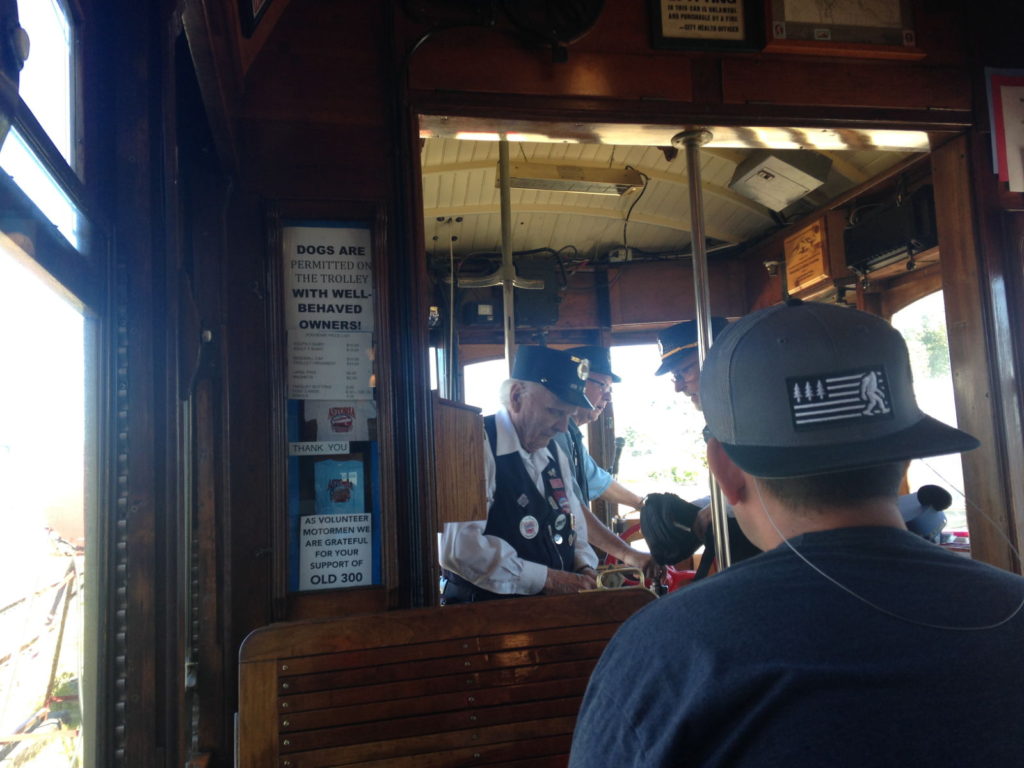
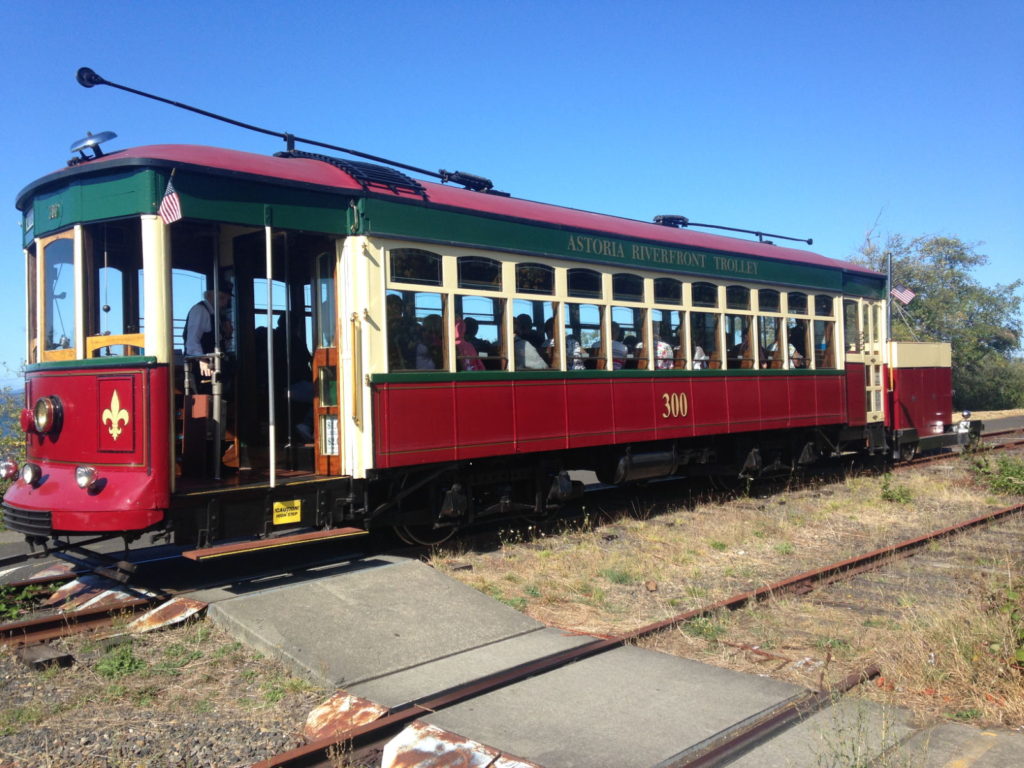
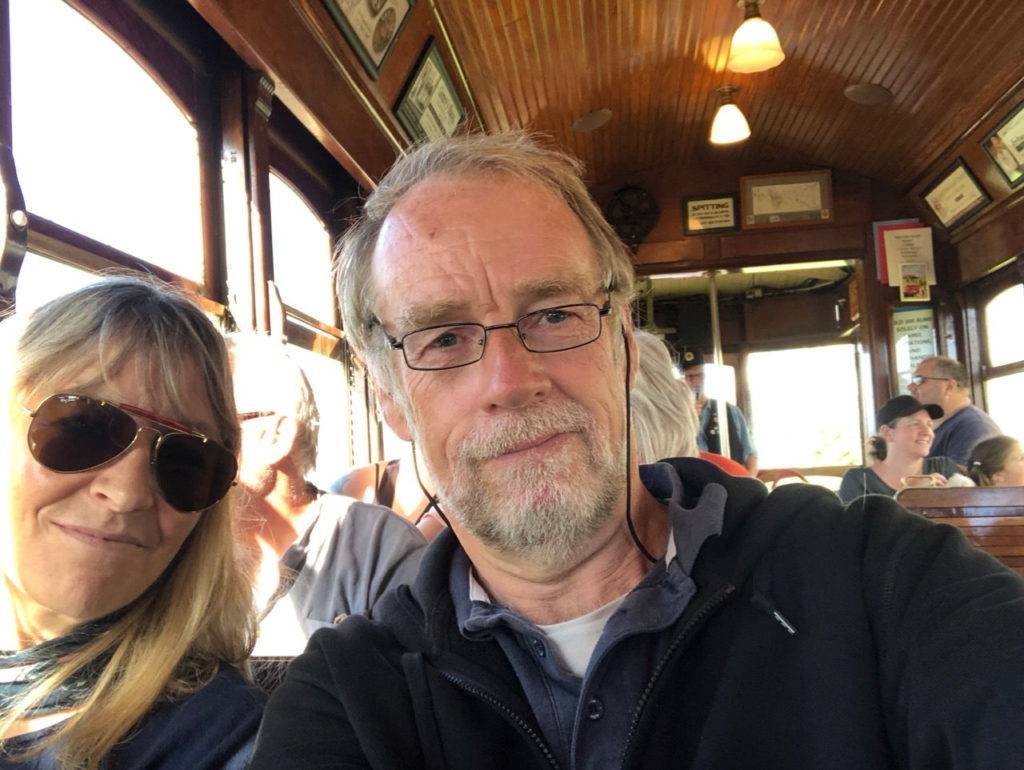
We got off at the Safeway stop for our first US supermarket shop in over a year. At least this time I knew what to expect regarding the high prices but it was still hard not to flinch when converting dollars to pounds (especially in this current political climate). The wide range of products and superior quality is just as captivating though. Before waiting for the trolley to go back we took a walk further along the track towards the sound of honking coming from the sea lions we’d been told about. A little too far away to see clearly, we could tell there were hundreds of them basking on the empty pontoons, jostling and fighting and they are never quiet. Warning – there will be a lot more sea lion reports and pictures in future blog posts.
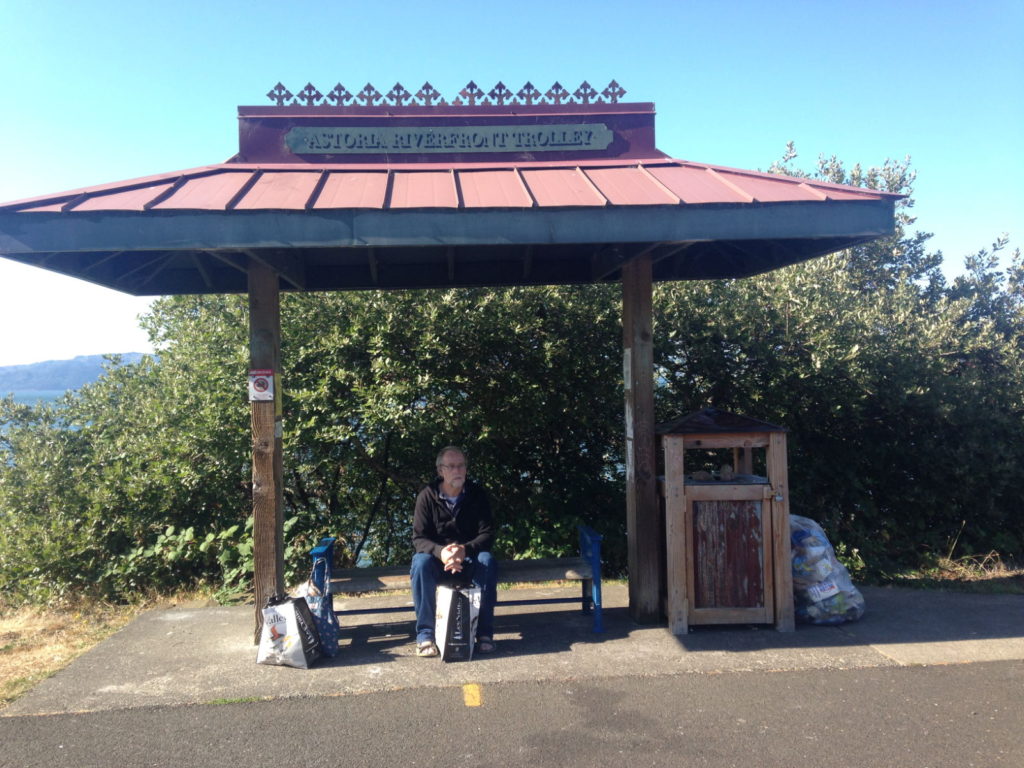
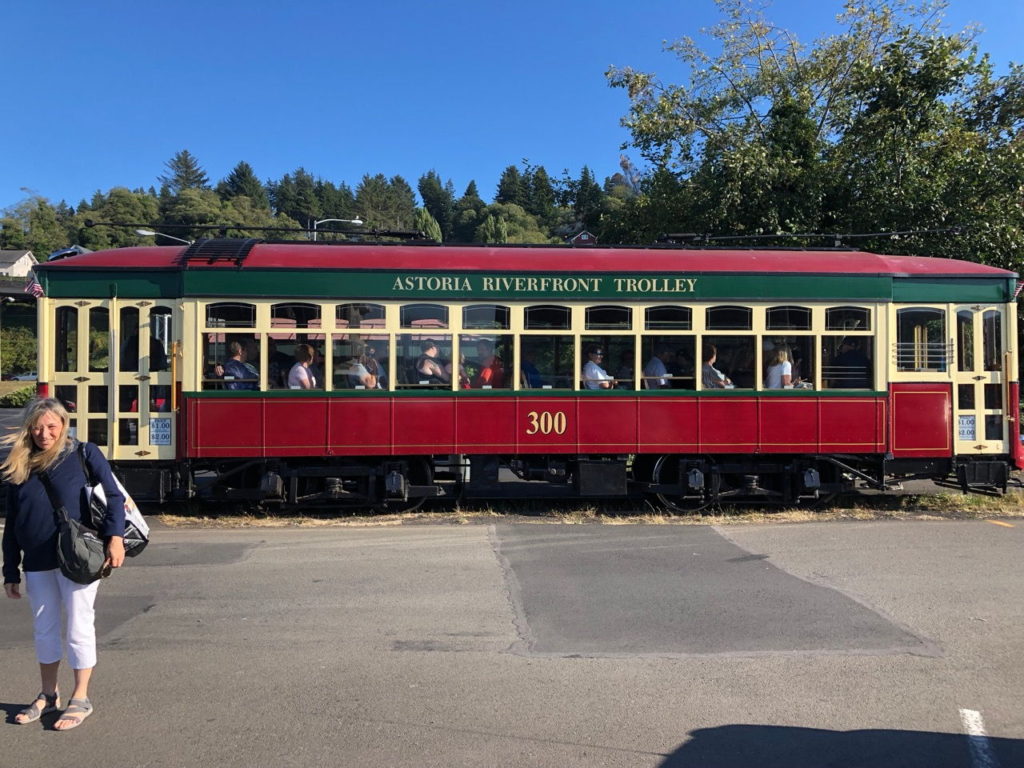
On Thursday 5th we got on our bikes and cycled across a long and very busy bridge to the town of Warrenton about 5 miles west of Astoria. We felt in need of the exercise after days on the boat. The bridge spans Youngs Bay and is part of US Highway 101, the 1,540 mile north-south Pacific coastal road that runs through the states of Washington, Oregon and California. Road trips have been, and still are such a major part of American culture, I hope we get to do at least one while we’re here (to Arizona and the Grand Canyon would be an ideal one). Huge lorries and fast cars sped past us on the rather narrow cycle track. It wouldn’t be a good idea to wobble or topple on this road! We stopped to look at a group of big white birds gliding across the water as one, like they were forming a living raft. We guessed it might have something to do with scooping up fish.
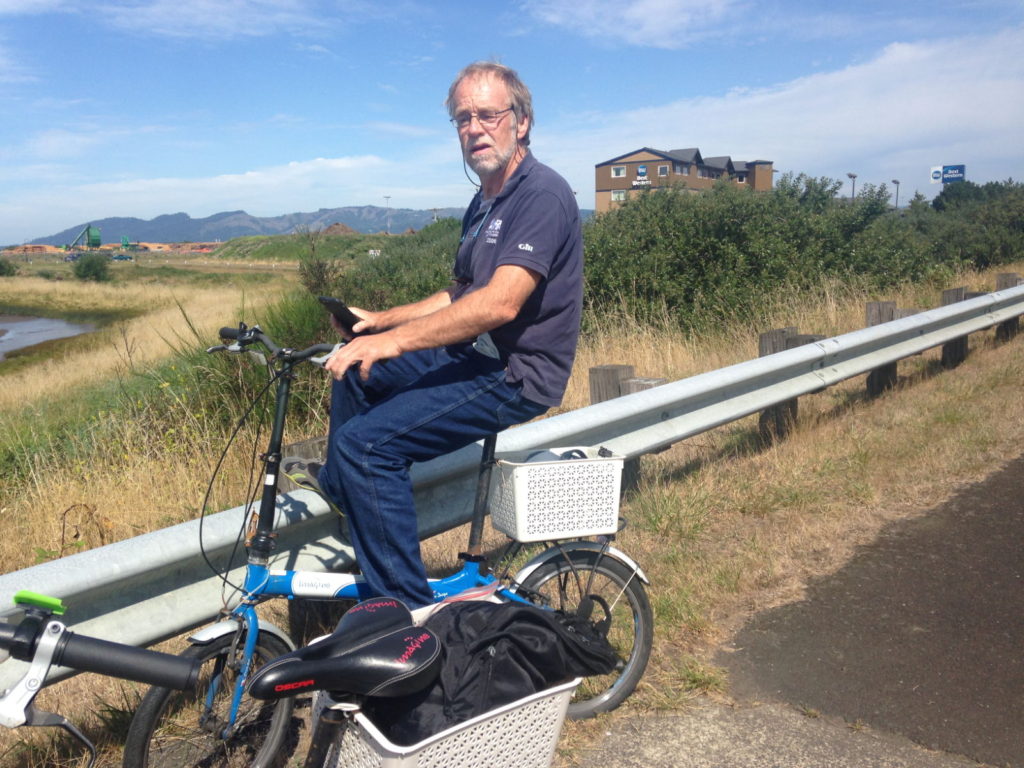
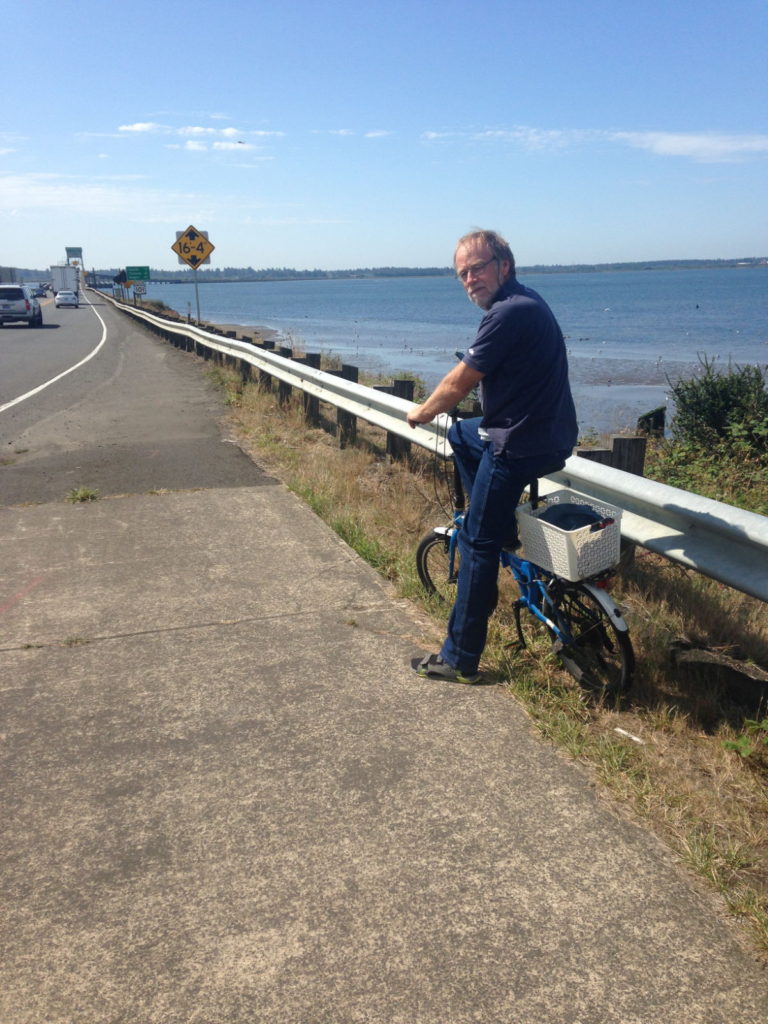
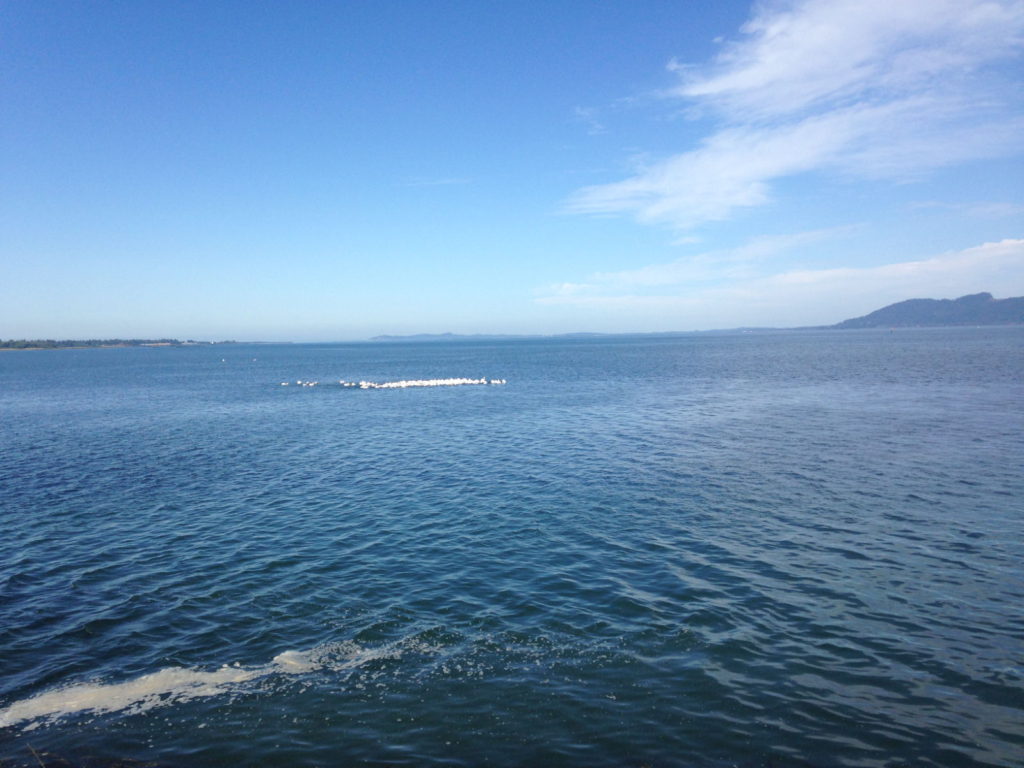
Our trip naturally took in a couple of shops (or stores) on the outskirts, and then we cycled through the town of Warrenton itself (pop. 5,050). It’s mainly a fishing and logging town, fairly small and neat and charming. It looked typically American to me. The ride back across the bridge was even more hairy due to its being rush hour, and the noise from the speeding traffic was literally deafening. By the time we got back we’d been out for over five hours, most of which had been cycling. I felt saddle sore and heavy-legged for a day or so afterwards.
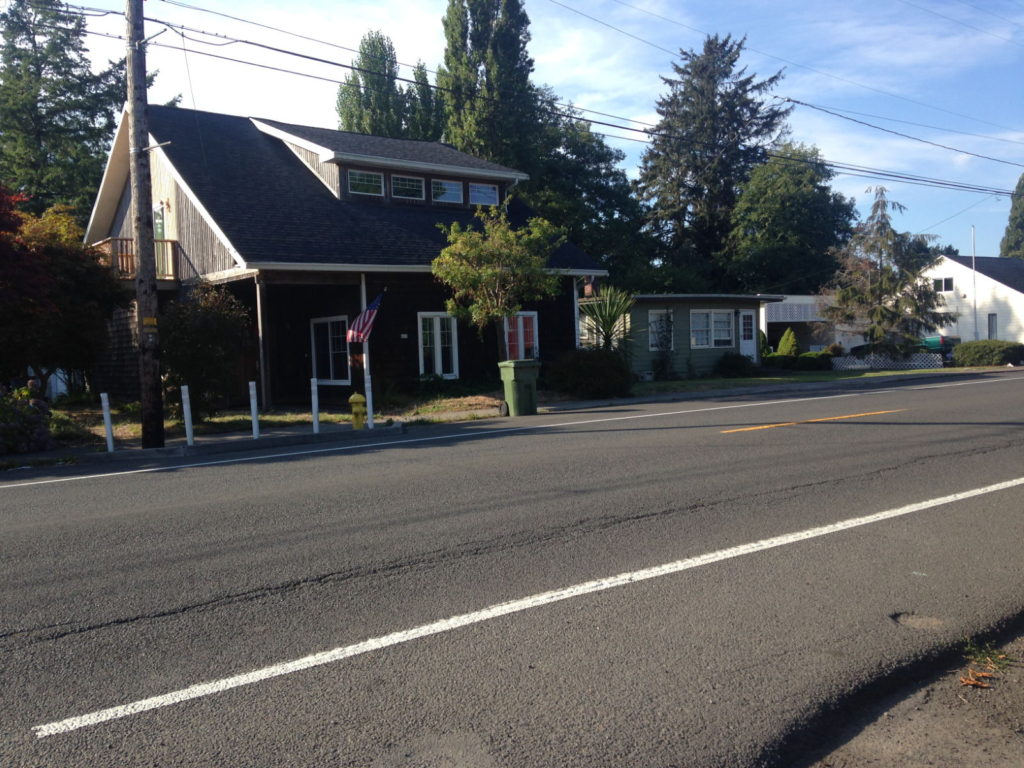
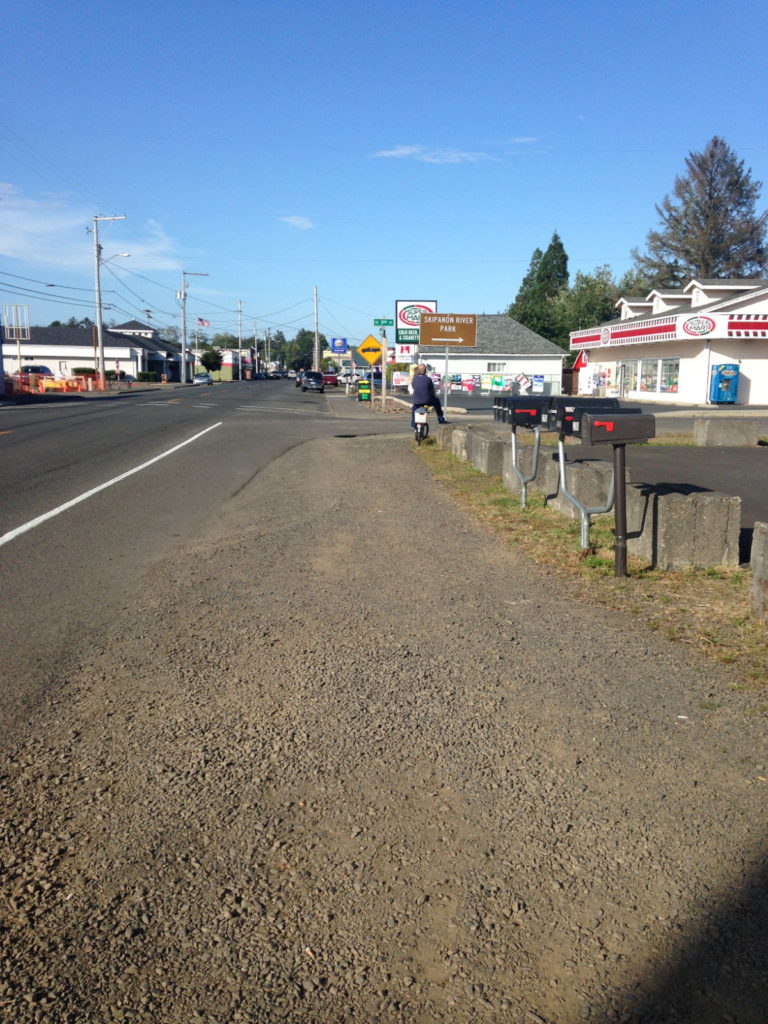
We had a cultural couple of days after all that exercise and took ourselves off to the Astoria Maritime Museum on the 6th. It had rained heavily during the night and was damp and chilly in the afternoon so a museum seemed the ideal place to go. Unlike in the UK, museums here charge admission fees but this one was well worth the money. It was here I learned more about the notorious Columbia River bar we had crossed. Films of it formed part of the exhibits and showed it at its worse, with waves of 30 feet causing chaos and distress. There was also an A-Z list of all the boats that have been lost or destroyed on it over the years. The admission fee included a walk around a decommissioned lightship. We got the chance to see what life was like for the crew on the Columbia lightship. They had to endure long stretches of boredom, monotony and rough weather in winter that prevented supplies reaching them, as well as having to ride frequent gale-force storms when they guided ships to the bar. She was replaced by a navigational buoy in 1979, and now there are only channel markers to guide us over it. They seem to do the job, though (thankfully).
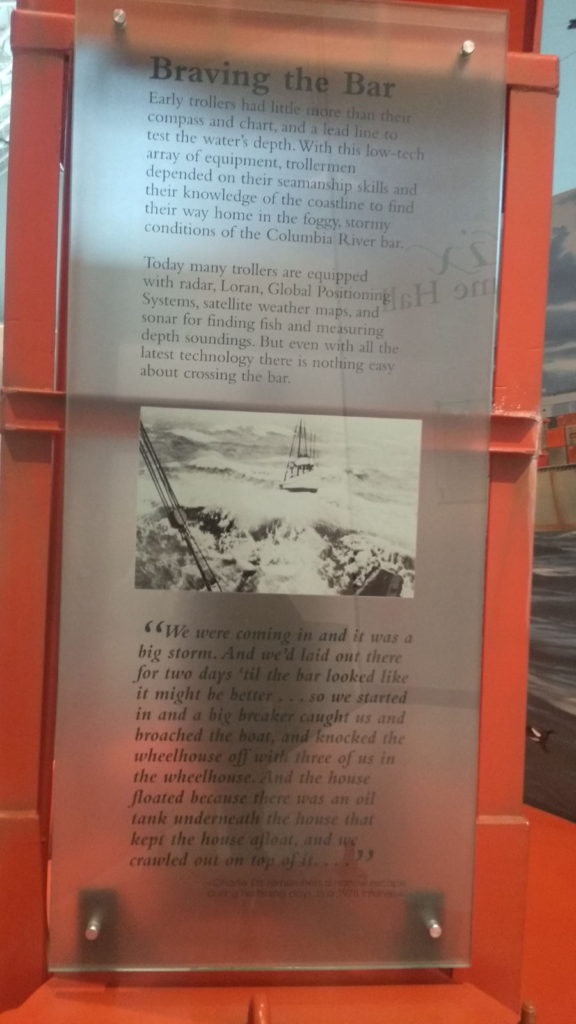
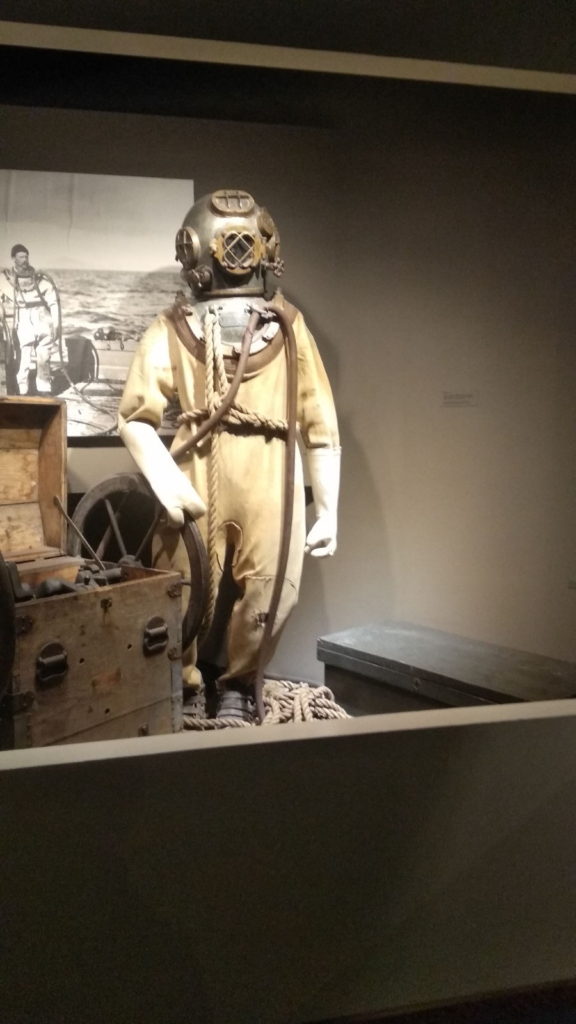
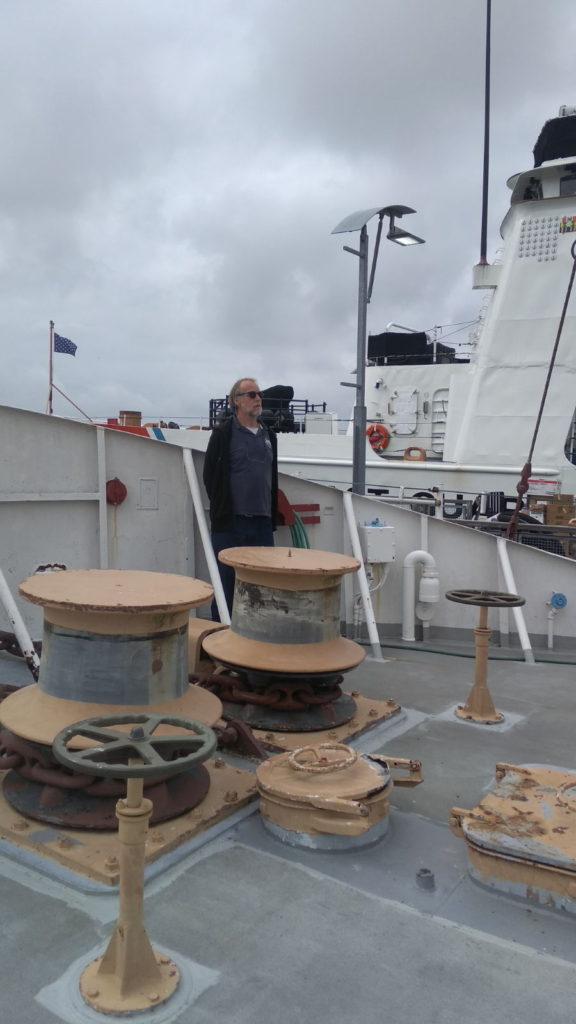
At the time of our visit there was a cruise ship docked opposite the museum which looked a lot more attractive than the typical huge cruise liners. This was the luxury paddle steamer Queen of the West and we stood to watch her being loaded with a staggering amount of provisions for her next voyage. The weather had improved when we came out so we cycled the length of the coastal track for another look at the sea lions and then into town via the inland main road to look at some of the architecture on the hilly streets there.
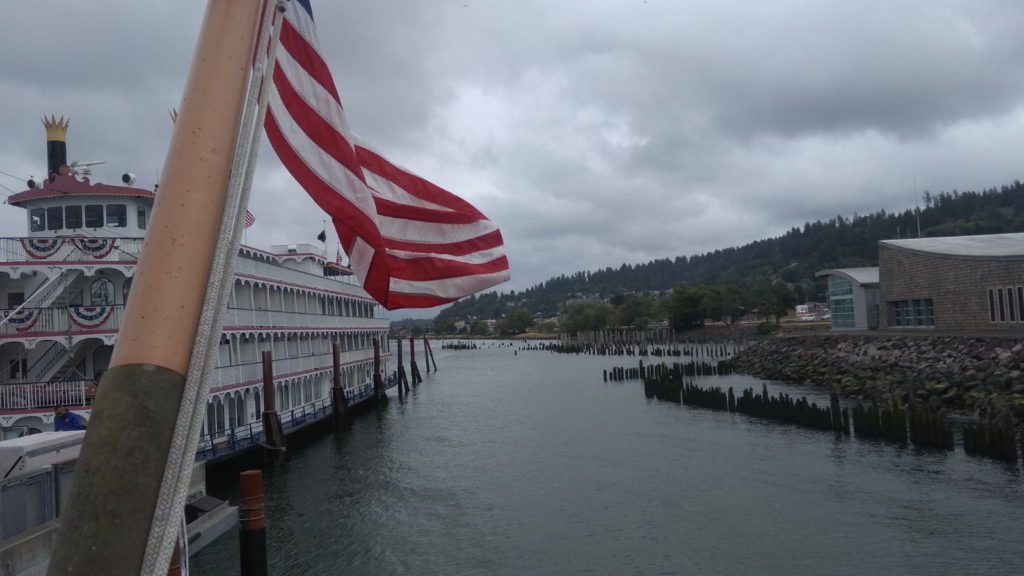
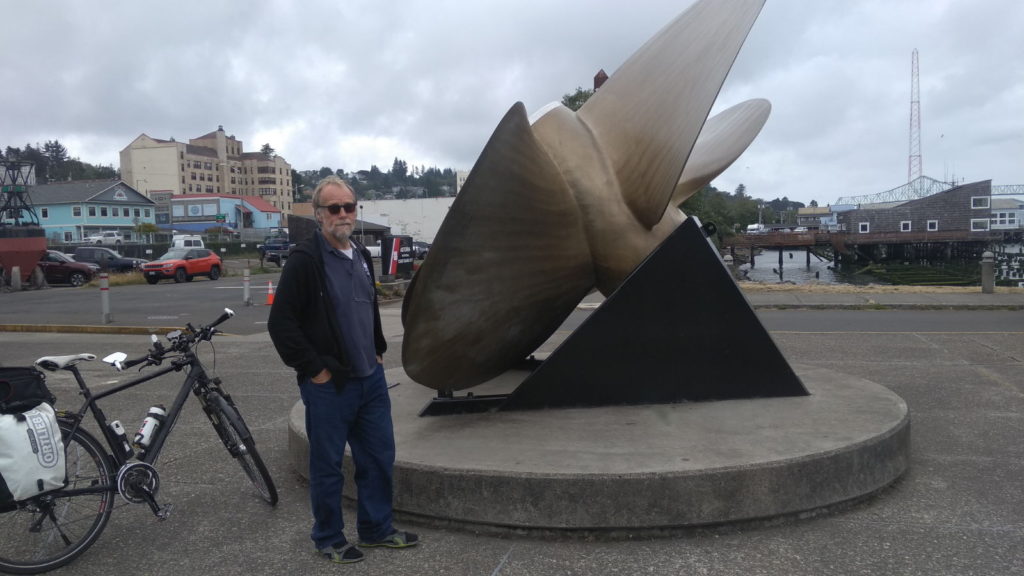
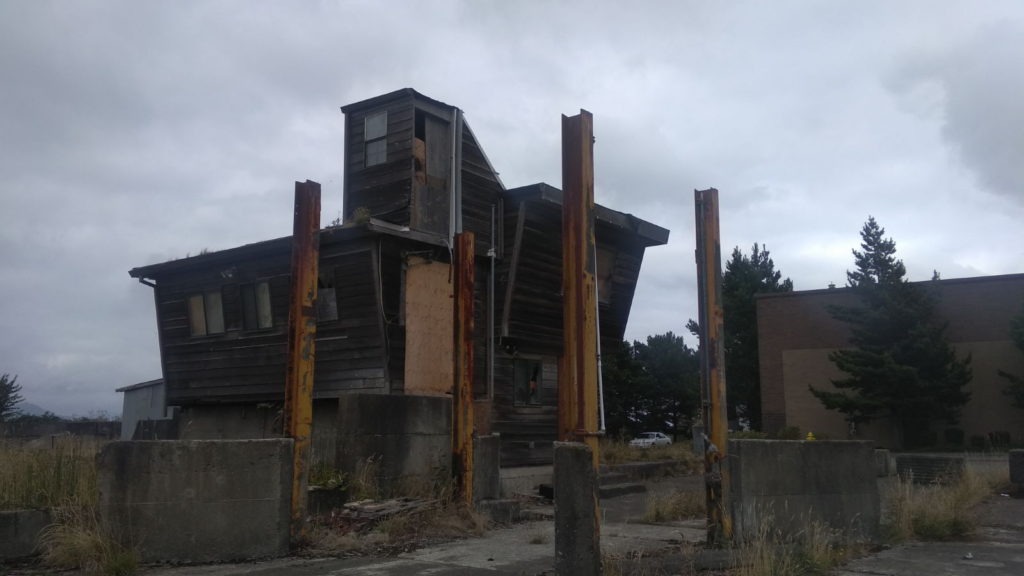
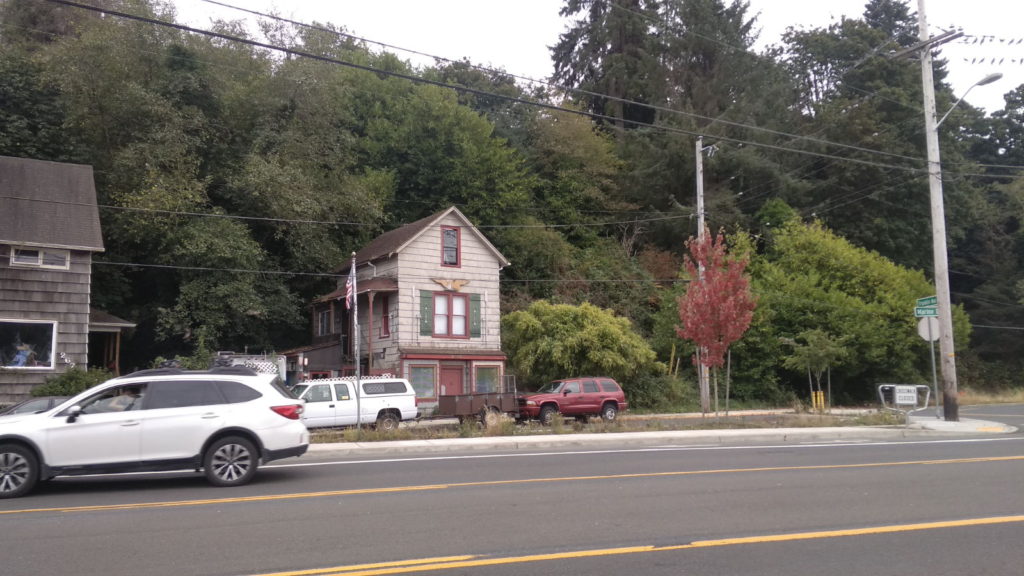
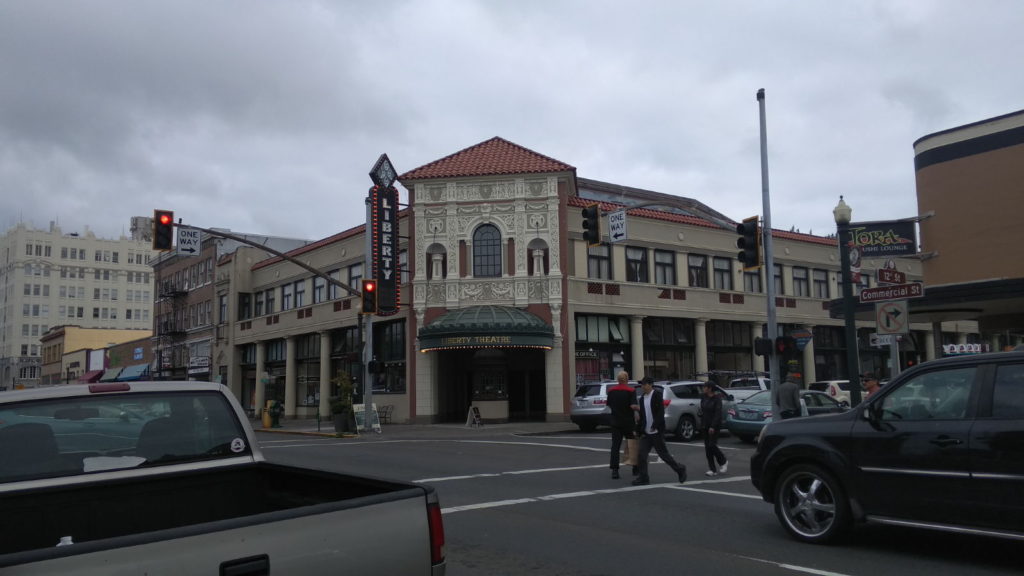
The Heritage Museum was our visit for Saturday. Here we spent an interesting couple of hours ambling around the exhibits reading about the town’s history and its notable events. It was surprising to discover Astoria had experienced some Ku Klux Klan intervention in the 1920s. I read later that the museum used to have a mannequin dressed in the distinctive white, hooded outfit but it’s no longer on display, presumably due to objections. We finished the day with a drink at one of the waterside pubs adjacent to the trolley track. Pics below of the day.
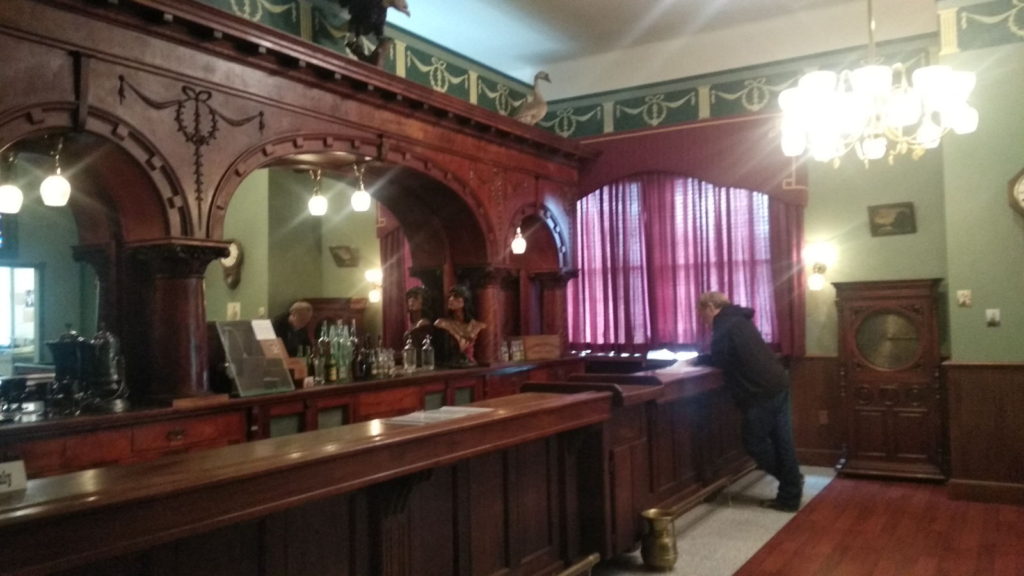
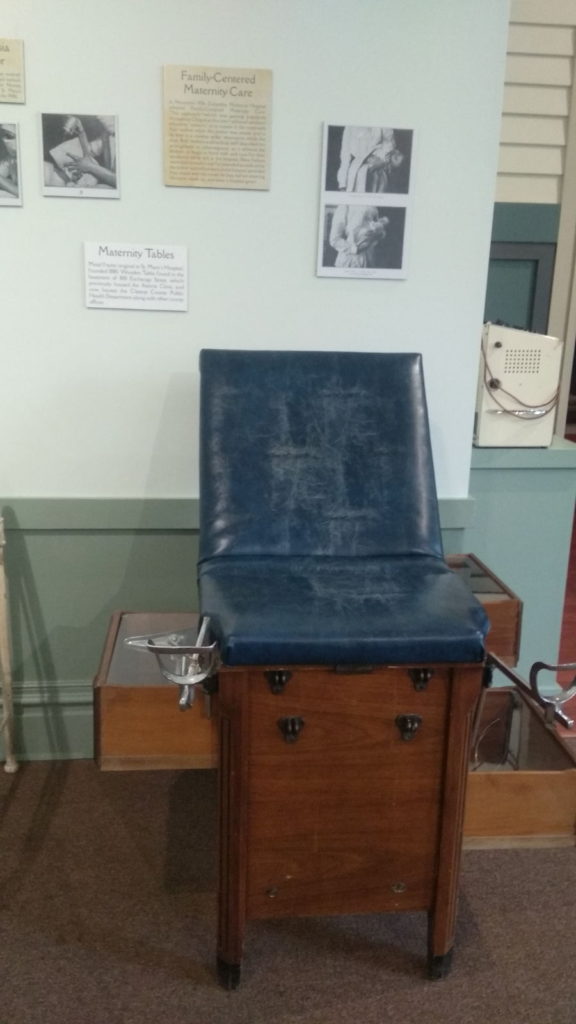
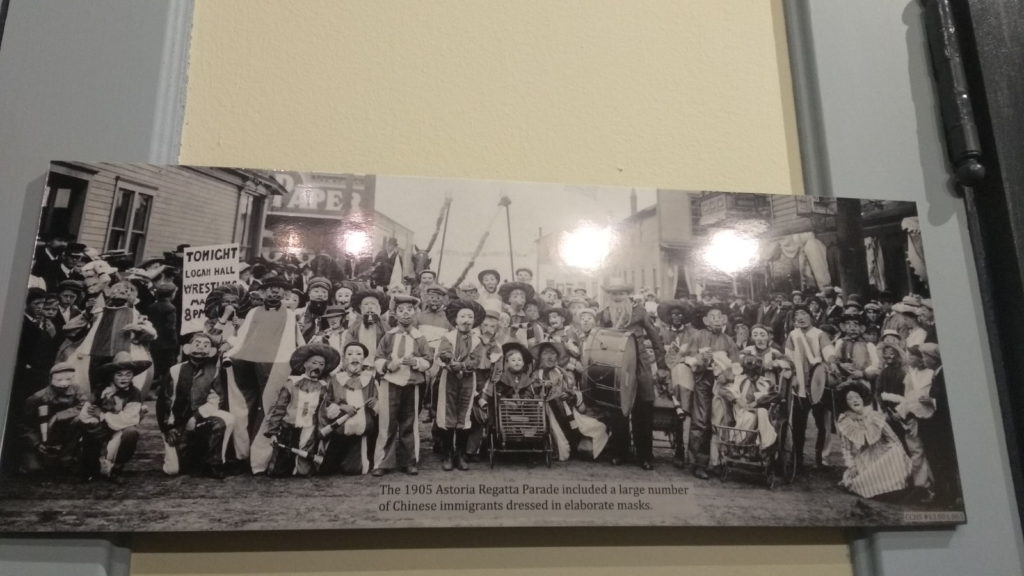
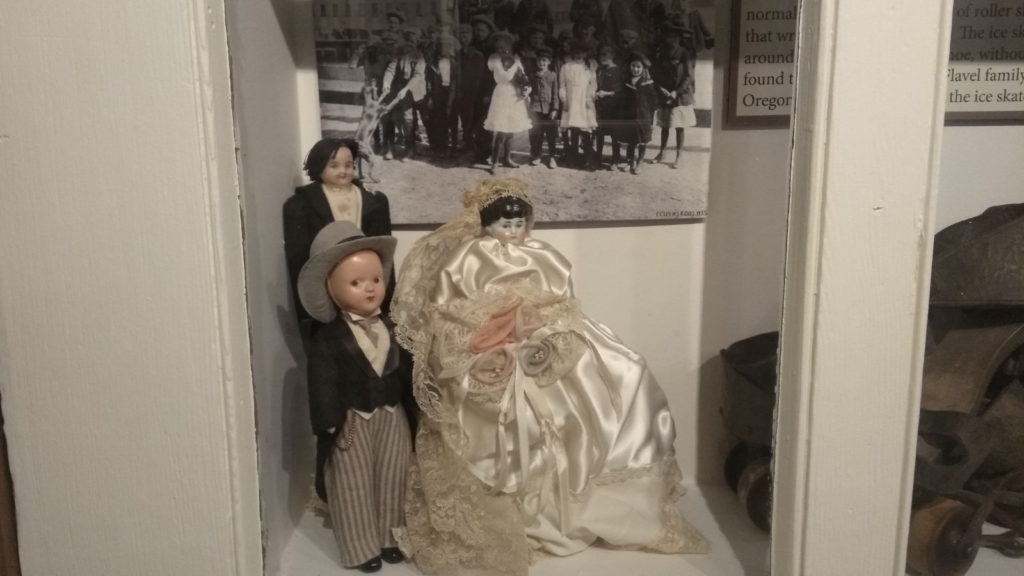
Our stay in Astoria was stretching into a longer one than we expected because of the need to consider tides and weather for the journey to San Francisco. It would be a 5 day passage from there, and the forecast was for lots of rain over the next few days which wasn’t a very attractive option. We decided to visit the Sunday street market and think about it later. As soon as I saw the market I knew what Paul’s opinion would be. I wasn’t disappointed – something along the lines of ‘overpriced tat and some muddy veg described as organic’ ;-). Still, I bought some of those veg and browsed the tat before we cycled to Safeway for provisions, having made the decision to leave for Newport the following day. The promised rain showed itself as a heavy downpour just as we began the ride back and it soaked through our clothes within minutes. That evening our marina neighbours invited us aboard their boat for a drink and a chat. They were going home to Portland by car in the morning and kindly gave us all their leftover fruit and vegetables.
Monday 9th was another full day in Astoria due to the heavy rain which had continued throughout the night and didn’t stop until midday. I took the opportunity to do the laundry and make use of the marina’s drier while we had the chance. We finally left our mooring at 5pm on the 10th September on a clear, bright and sunny afternoon. This time when we crossed the bar, I didn’t even realise it. I was down below making vegetable pasties! There was a pretty strong swell too. I bet there aren’t many people who can say they were cutting out circular pastry shapes and spooning filling onto them while being lurched around on a notorious killer bar. Here are the finished results anyway. Left in the oven to stay warm, they made a tasty and convenient hand-held ‘at sea’ dinner.
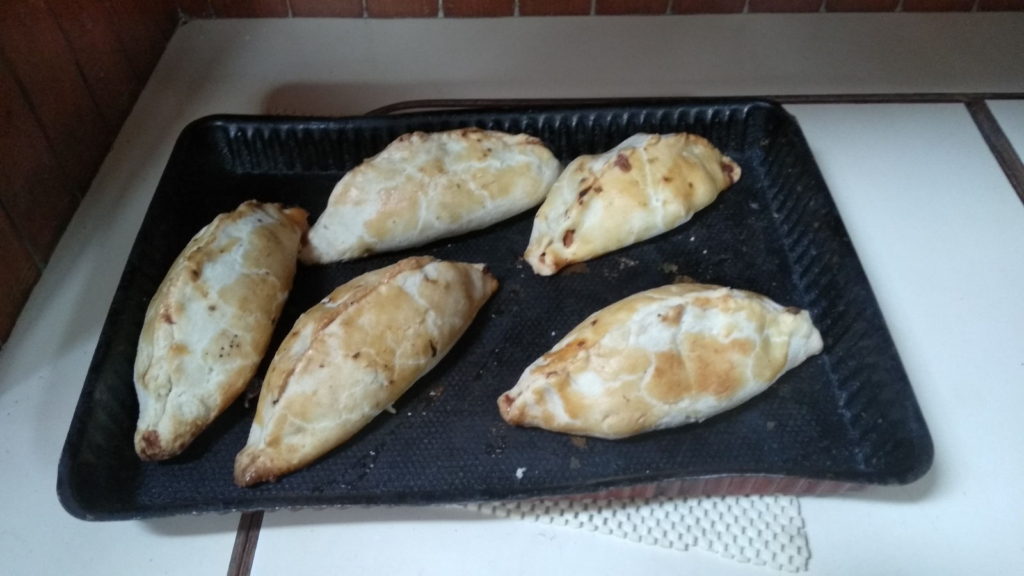
Before I took the 8pm watch, Paul called me up to the cockpit because he thought he’d spotted whales in the twilight. By the time I got up there they had disappeared but what I did spot, which had us both laughing, was a group of brown heads. Some curious sea lions had come to look at us – four pairs of huge round eyes with long lashes were wide open as if in outrage at such an invasion. I kept an eye out for the whales during my watch. I had the benefit of a bright moonlight path to light up the surface but didn’t spot any. Newport would our next destination as we continue our southerly voyage down America’s west coast.
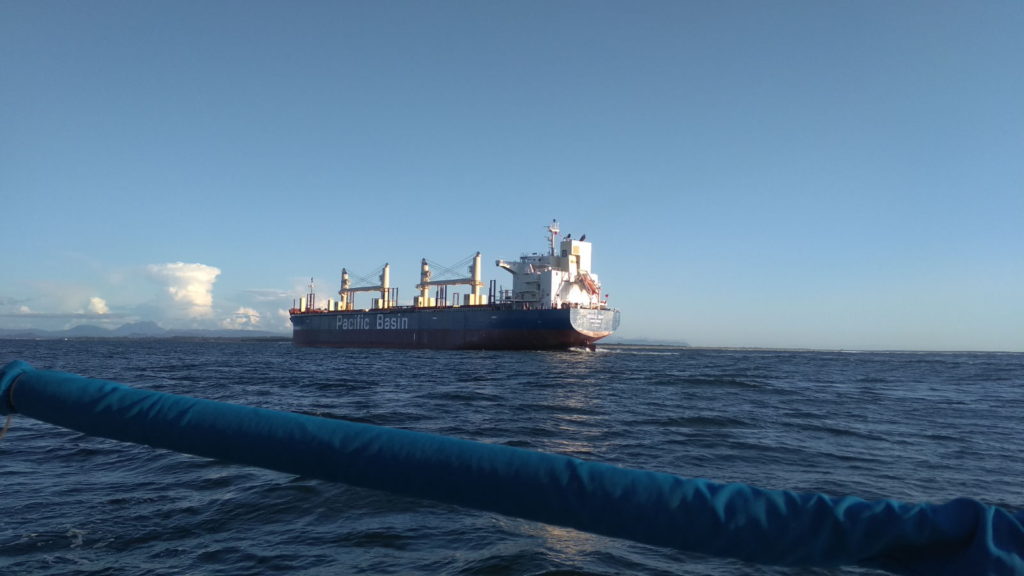

Very interesting read Kathy and great photos. I hope that little bird found another cosy refuge on the boat. Well done Paul for crossing that bar successfully so that you didn’t end up joining the other casualties. Those pasties looked delicious, only you could be found making pasties in rough seas and find foggy dark” night watches” atmospheric haha. xxx